As her class’ recent culminating project, students were assigned a country within the Western Hemisphere to research. They created a travel brochure to not only teach their classmates about their country, but to persuade them to visit. As students were presenting, the rest of the class took notes in their "passports," showcasing all of the countries they "visited!"
What a great way to learn about other areas of the Western Hemisphere plus practice important public speaking skills!
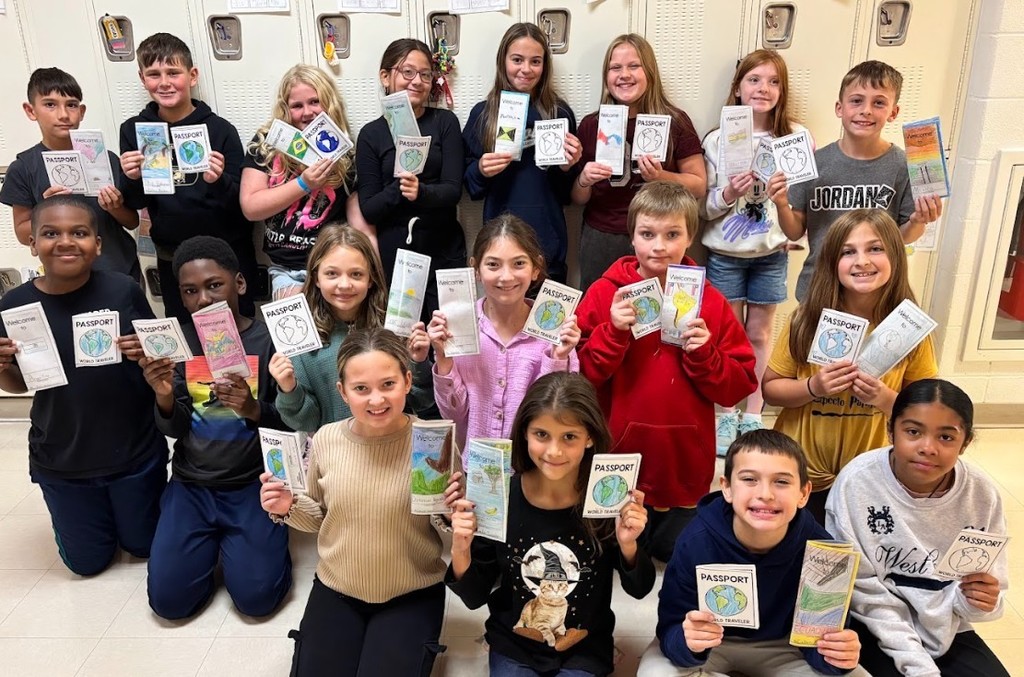
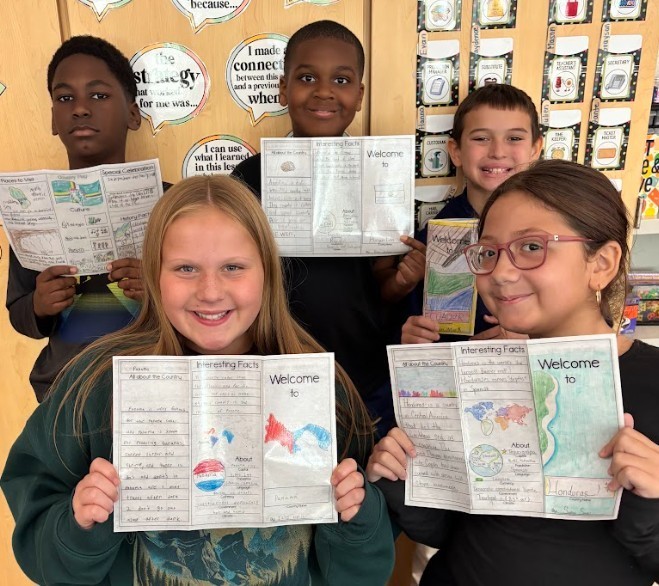
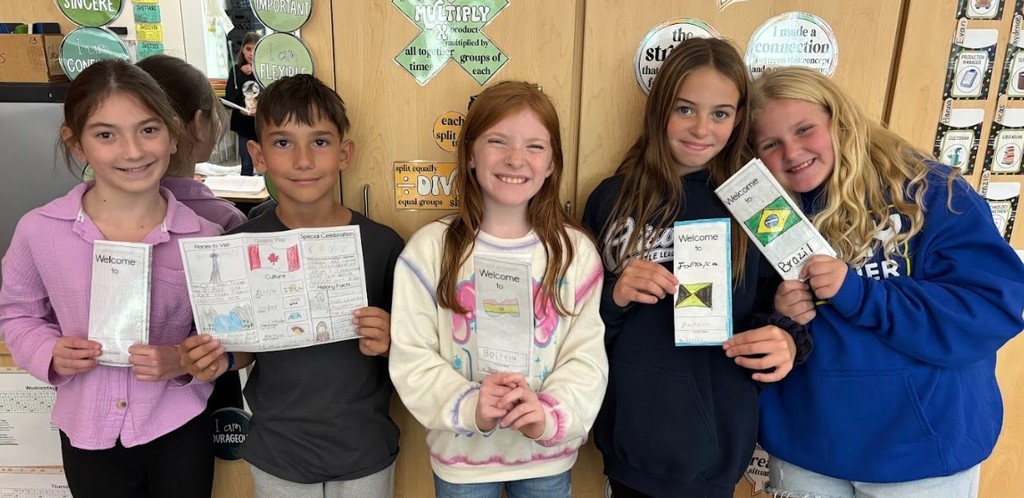
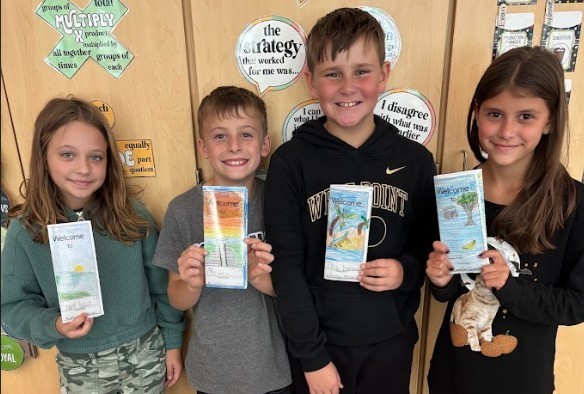
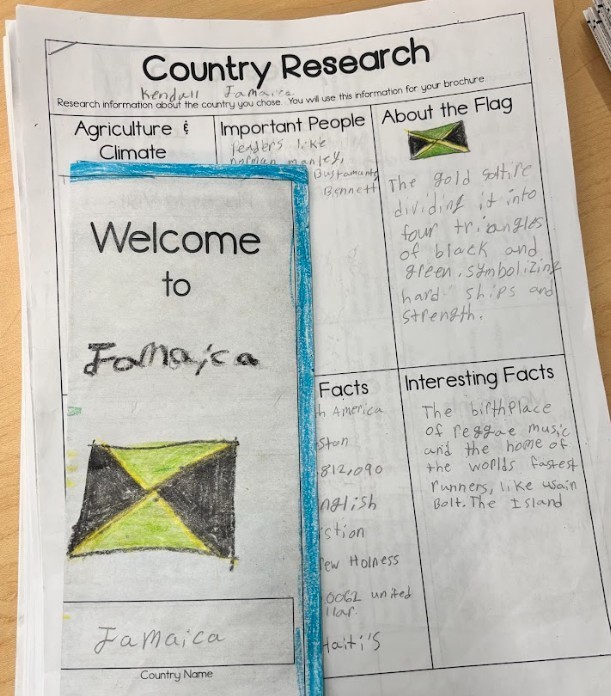
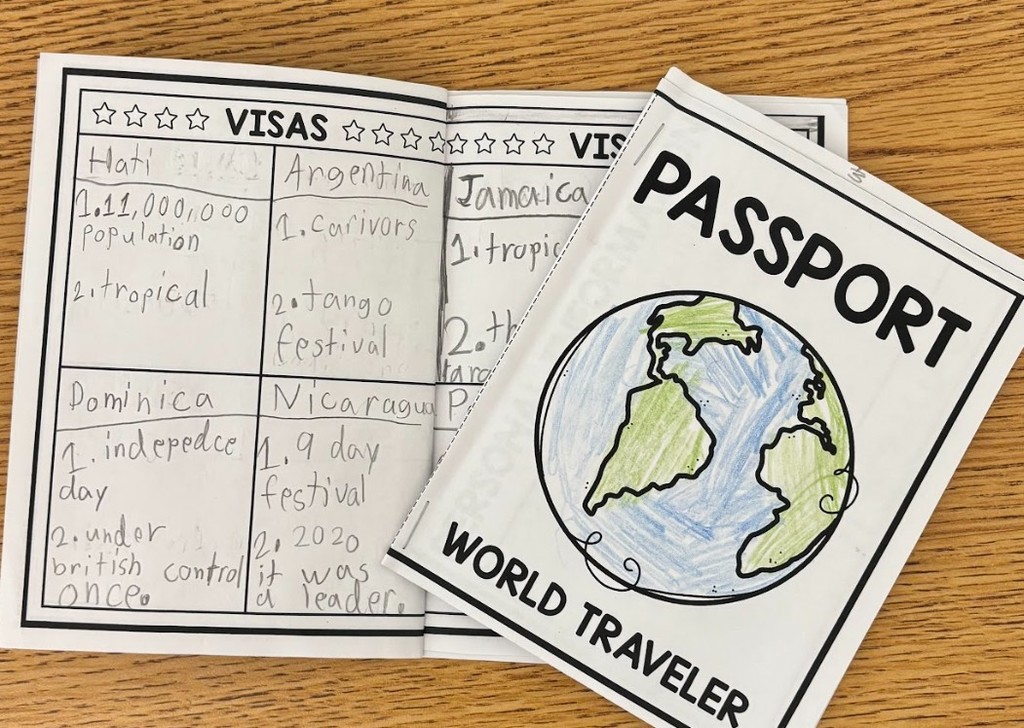
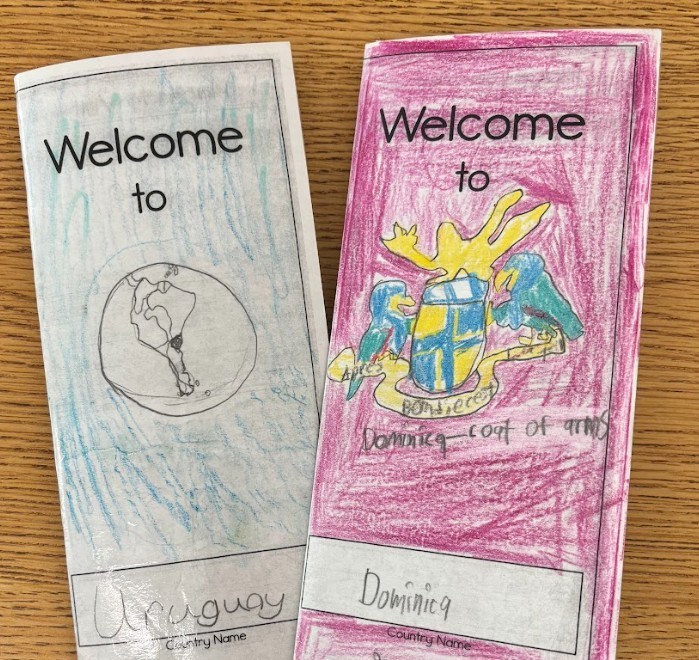
DID YOU KNOW
•Diabetes affects over 530 million people worldwide.
•It is the 9th leading cause of death globally.
•Type 1 diabetes is an autoimmune condition that typically develops in childhood or adolescence.
•Type 2 diabetes is a lifestyle-related condition that usually develops in adulthood.
•Early detection and management of diabetes can prevent serious complications, such as heart disease, stroke, kidney failure, and blindness.
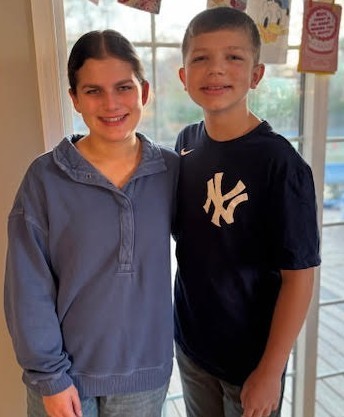
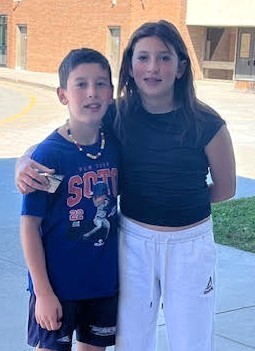
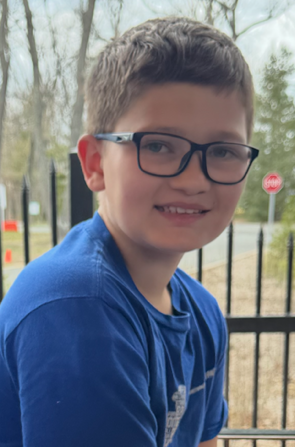
Otisville’s K-Kids Club installed its 2025-26 officers and inducted its new members at a recent gathering, which was also attended by Minisink Valley Kiwanis President Jackie Lavandowski and other members. Congratulations to Peter Caputo, president; Jillian O'Sullivan, vice president; Reese Neiger, secretary; and Isabelle Decker, treasurer!
Last, K-Kids has been involved in many meaningful projects, including: the Trick or Treat UNICEF Collection: where funds raised supported Brick x Brick Project, an innovative project that transforms plastic waste into classrooms for some of the 1.6 million children currently out of school in Côte d’Ivoire, Africa; Treats for Troops for Operation Gratitude; Souper Seniors; Valentines for Veterans; get-well cards for patients at Garnett Medical Center, the Minisink Cares Cake Box Kit project teacher appreciation thank you notes, and companion projects with the K-Kids Club at the Intermediate School. The group expects to be equally busy this year!
Group advisors, Andrea Yager, Logan Reggio and Danielle Ulbrich are looking forward to another active and fun year of community service.
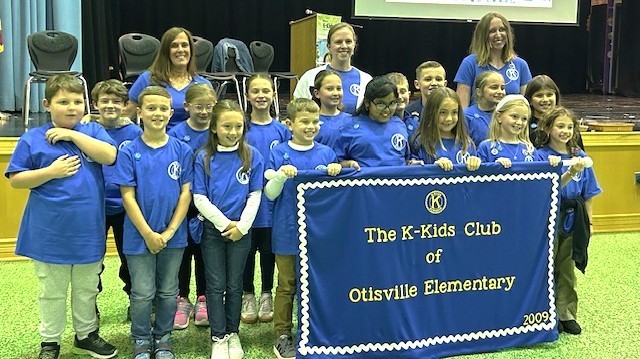
Students need to apply greater or lesser force depending on the item and distance they are throwing and they’re doing this through their activity is called "Flip the Hoop." Students start at the black line with a bean bag and hula hoop. Every time they throw their bean bag into the hoop, they flip it over toward the middle of the gym. When they flip their hoop all the way to the middle of the gym where their polyspot (non-slip marker) is located, they can trade their bean bag in for a new item to throw!
Learning to throw underhand is important for young students because it develops fundamental motor skills, such as hand-eye coordination and large muscle control, and is a foundational skill for many sports and activities. It's easier for children to learn due to its simpler motion and lower velocity, making it a good starting point for building confidence and strength before moving on to more complex overhand throws. Also: Mastering underhand throwing helps with skills like spatial awareness and balance, which are crucial for a child's overall physical development.

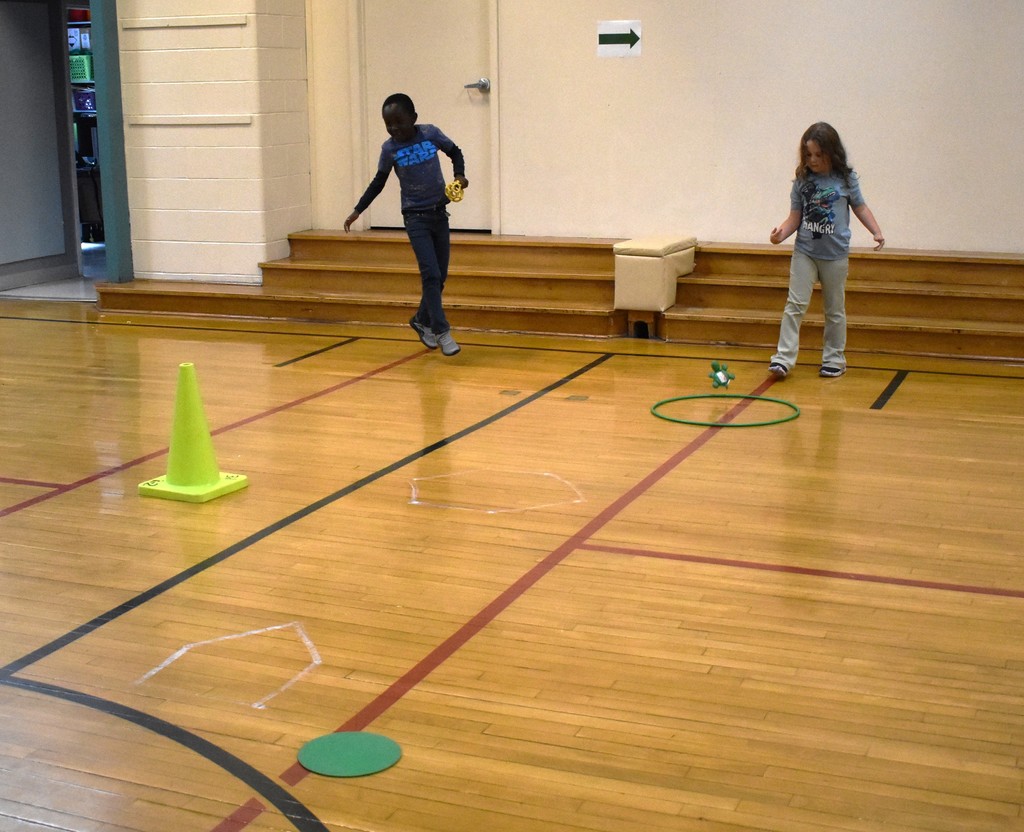

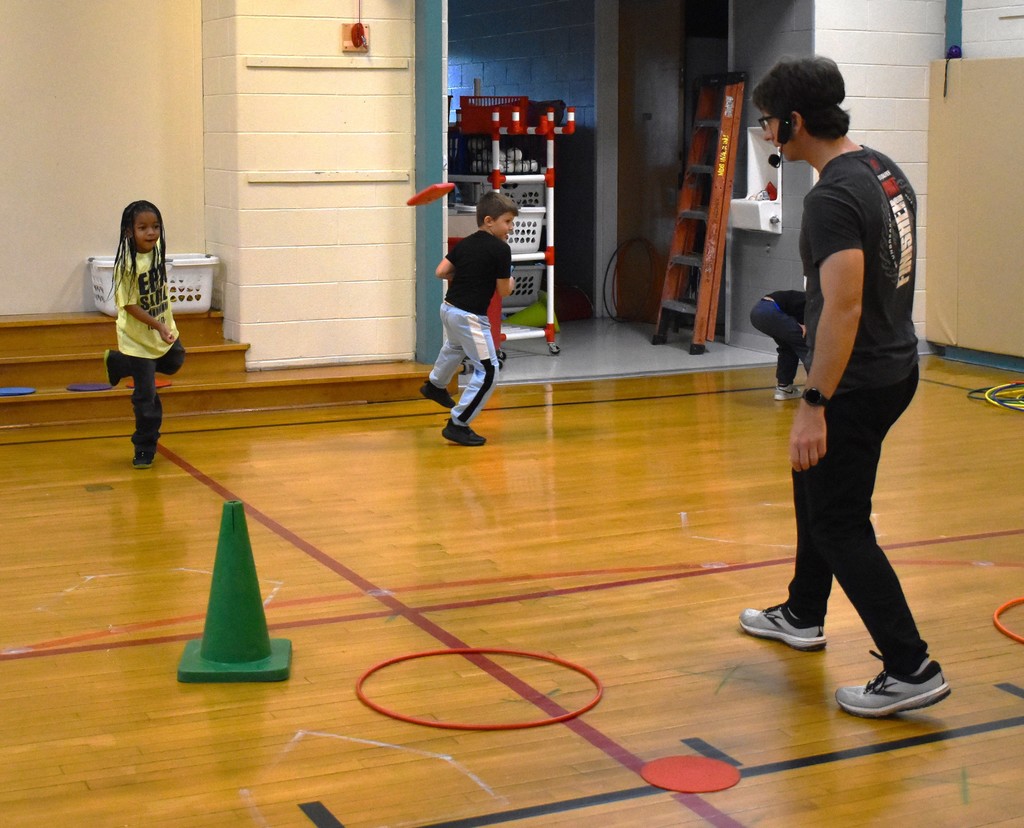
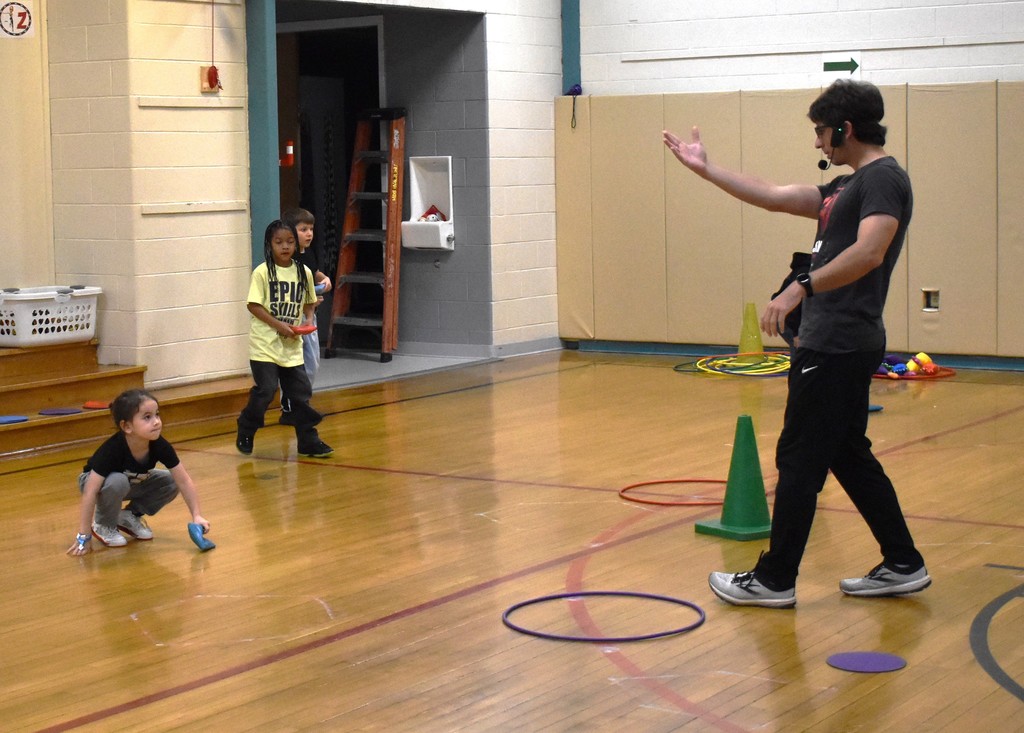


https://onthestage.tickets/show/mvms-drama-club/68edb34676bdd5748882d65f/tickets?fbclid=IwY2xjawN7LlxleHRuA2FlbQIxMABicmlkETFFc1pXNE9PazVGUnBhbUZMc3J0YwZhcHBfaWQQMjIyMDM5MTc4ODIwMDg5MgABHmZ2fK3TxJfIaekFdir5jWs1z8FWY6dLHjUnwcaa8BoetcHJCdF1xSZMrzaC_aem_FJ20xrtpxN_RN7veT_oHeA#/productions-view
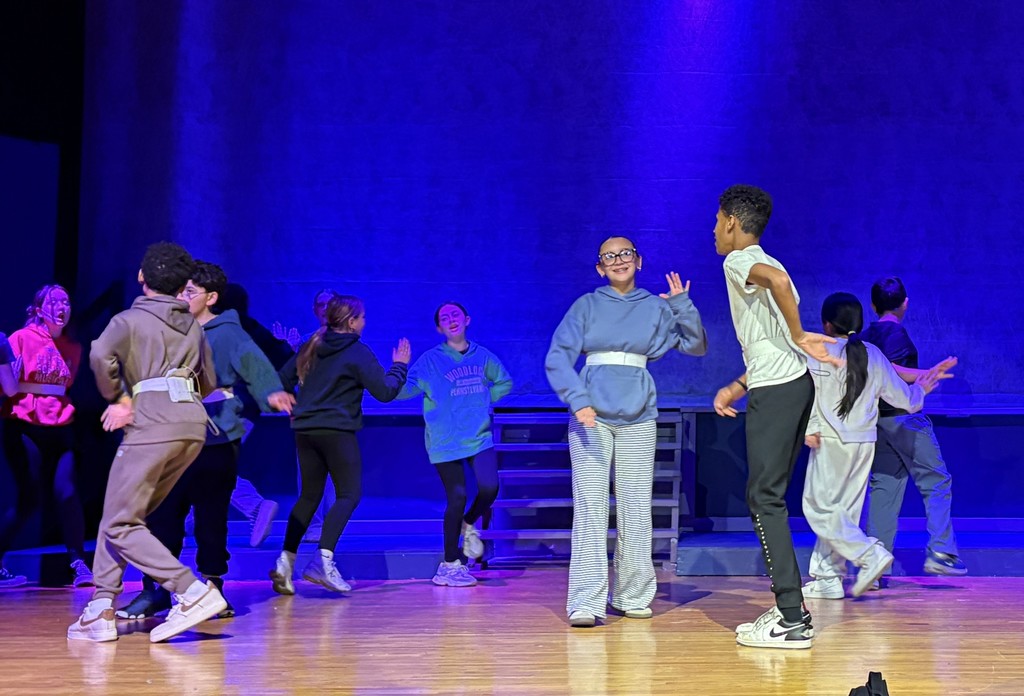
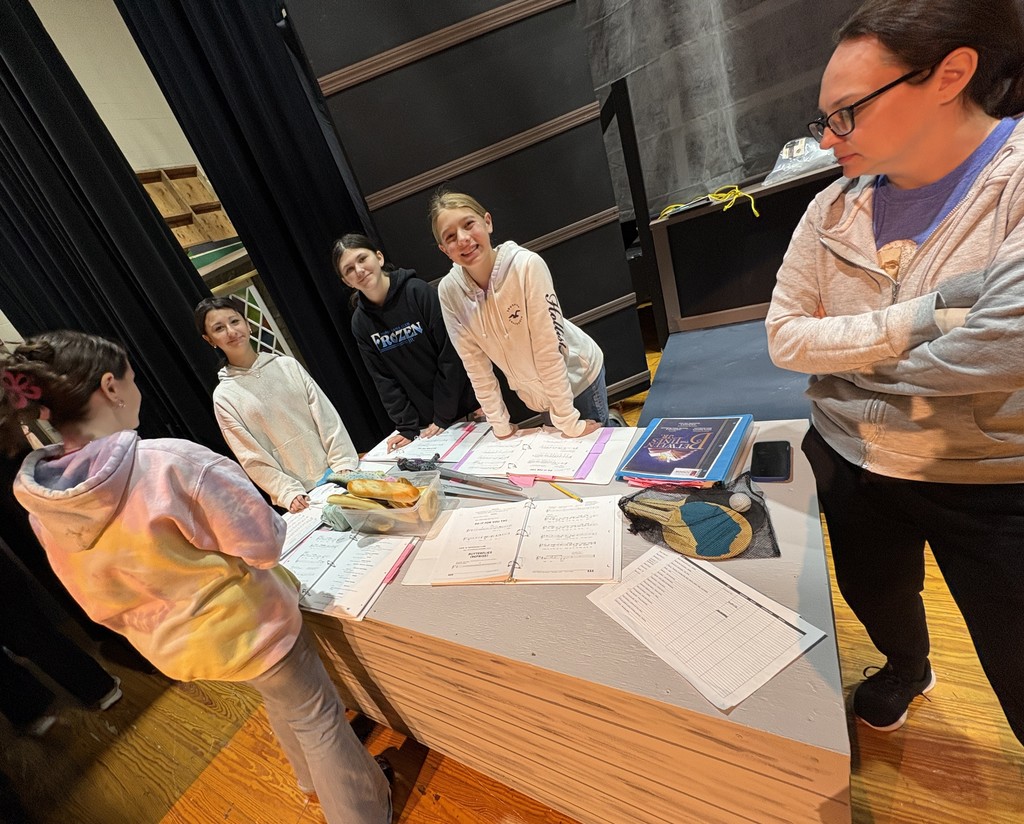
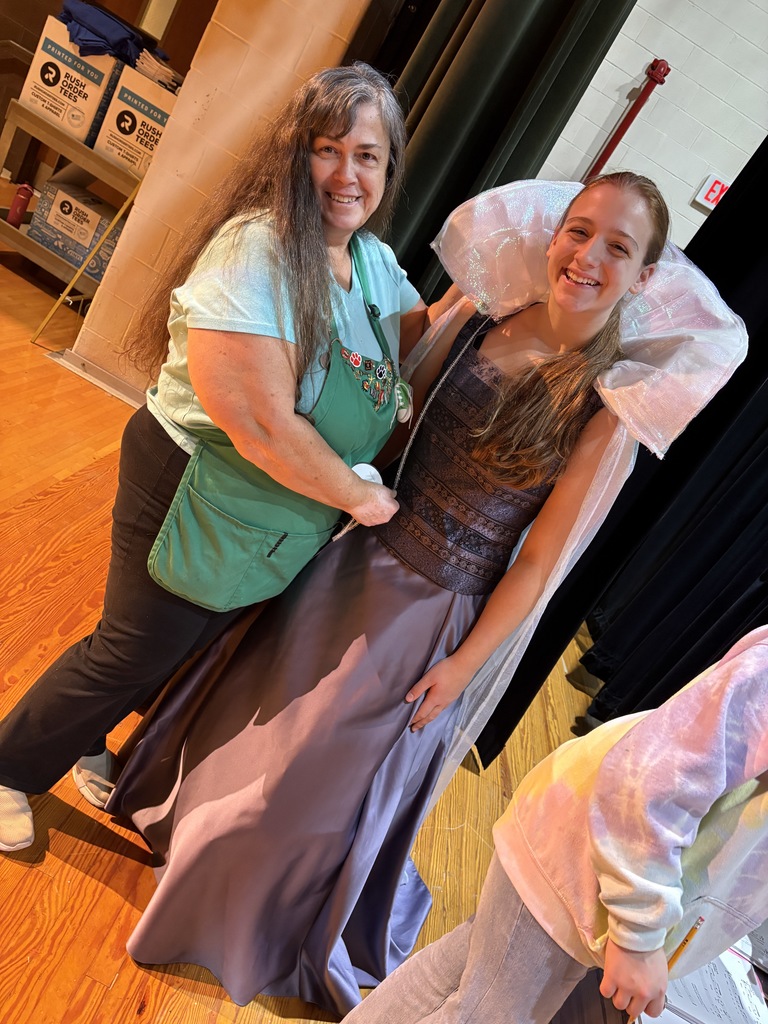
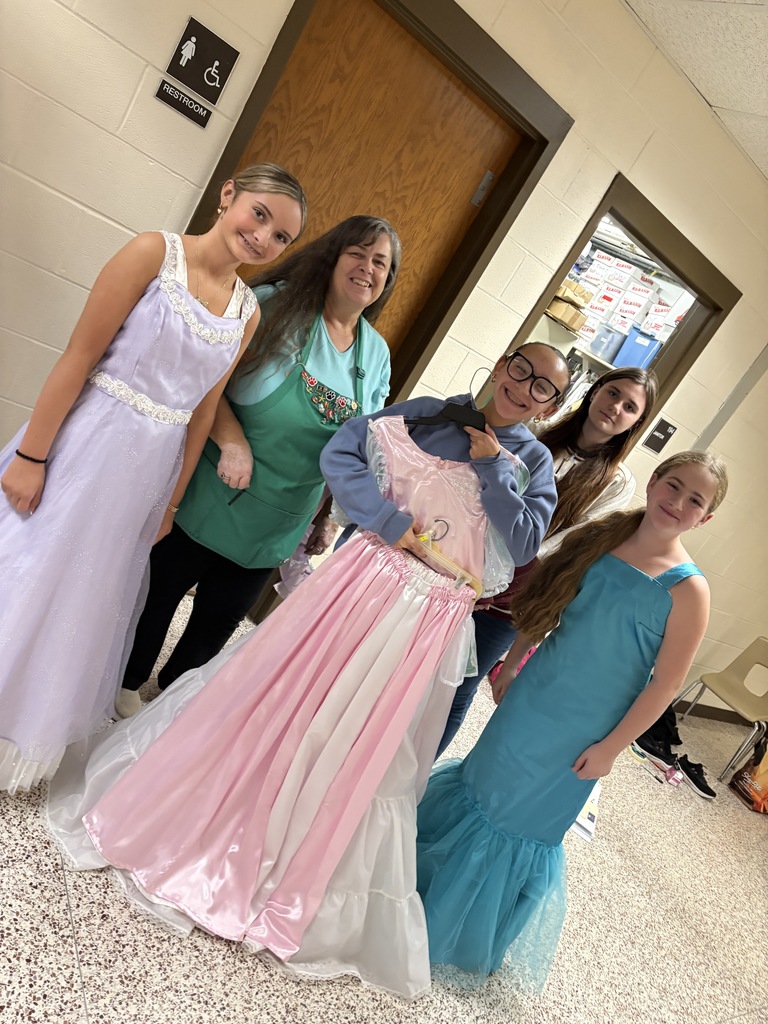
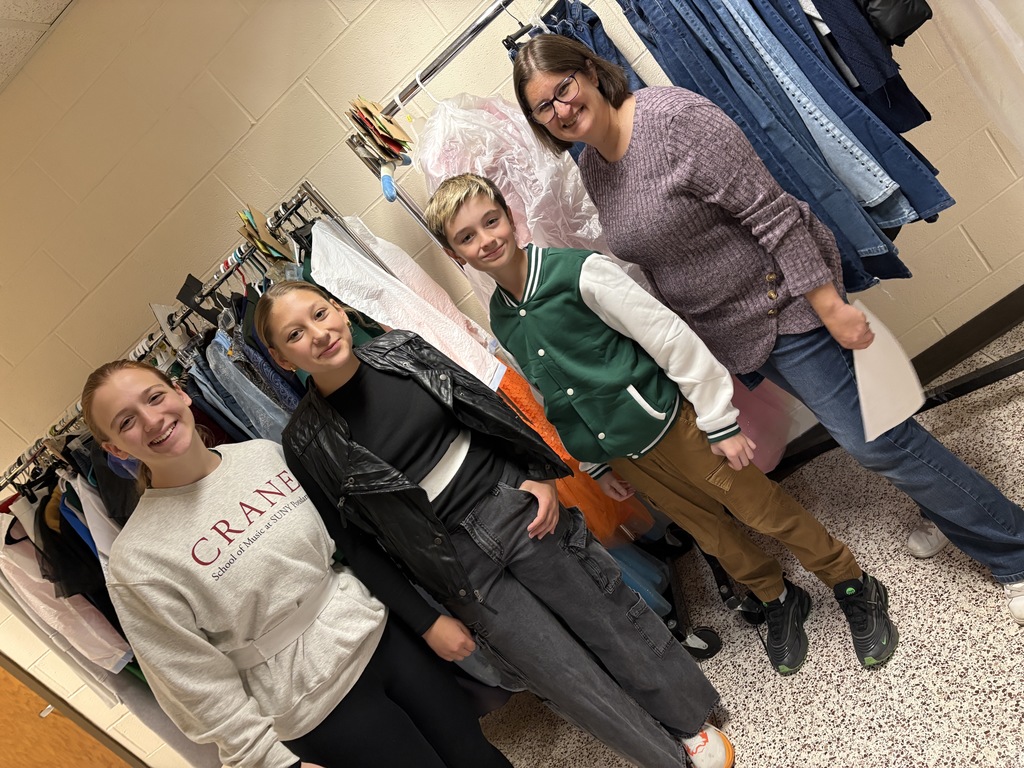
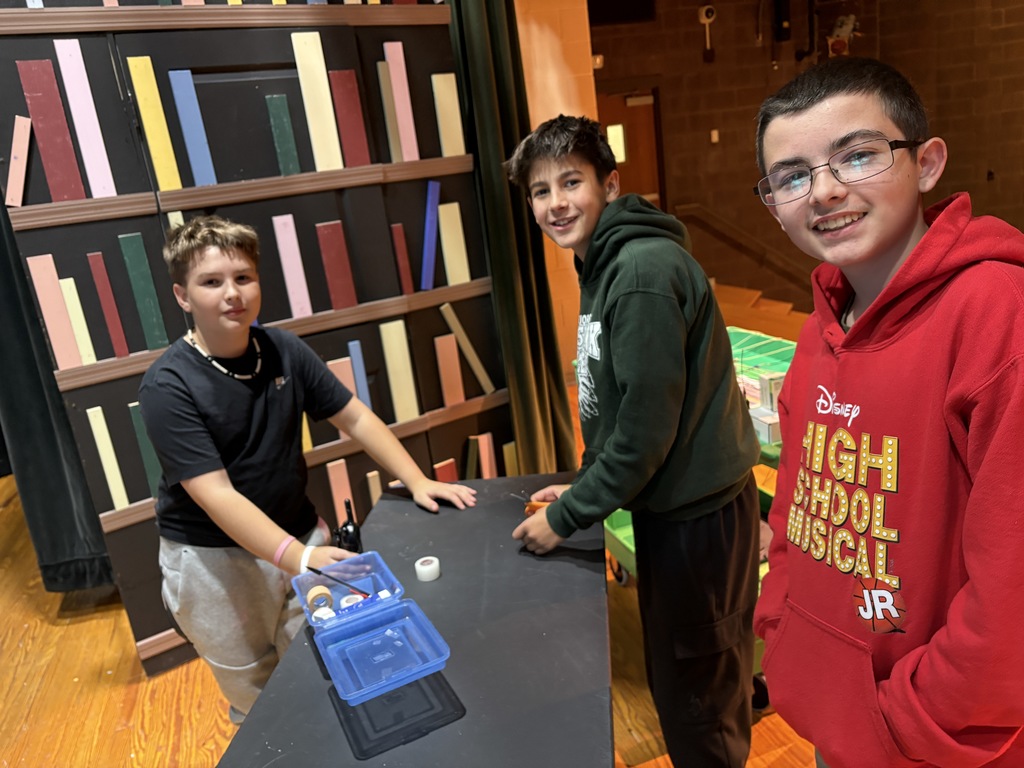
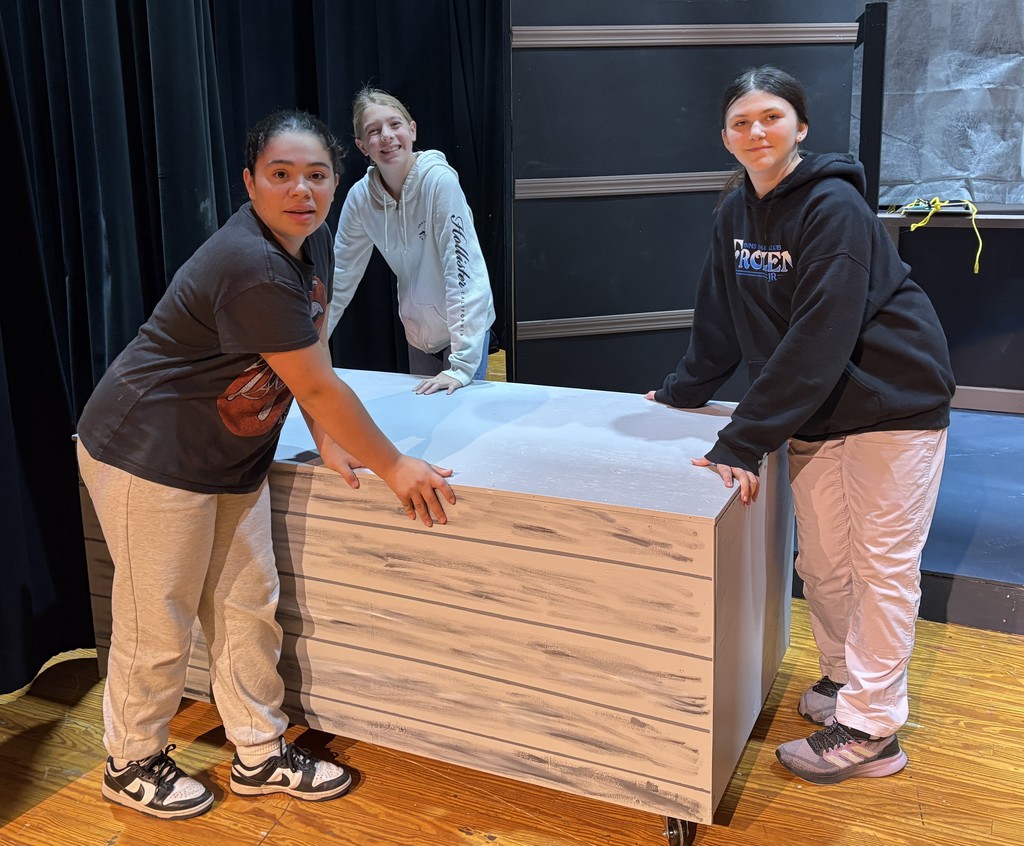
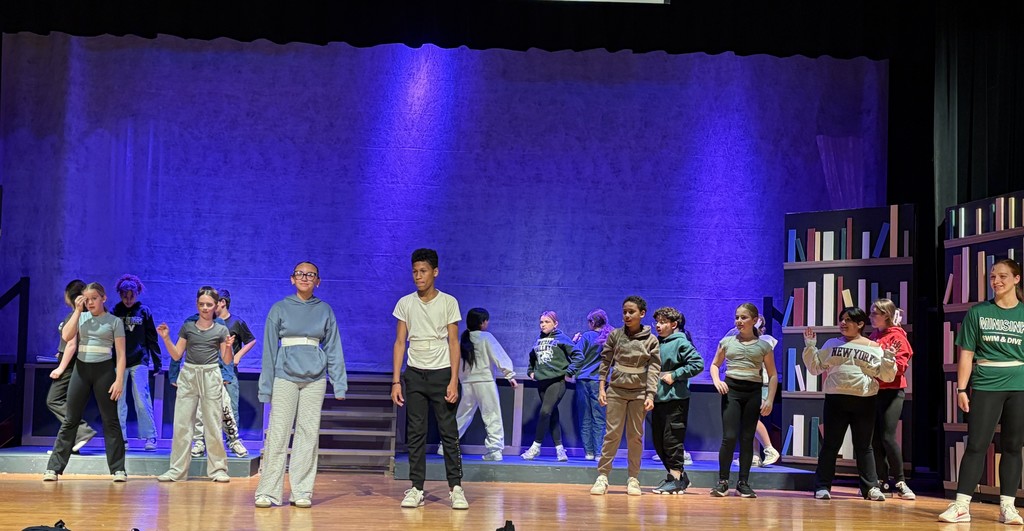
Did you know Minisink Valley’s Facebook page features thousands of great photos and information which show what’s going on at Otisville Elementary, Minisink Valley Elementary, Minisink Valley Intermediate School, Minisink Valley Middle School and Minisink Valley High School?
Over 8,400 people (and growing!) in the greater Minisink Valley area “follow” the district’s page. Join them! It’s a great source of information!
Visit the district's Facebook page and be sure to “like” us: https://www.facebook.com/MinisinkValleyCSD

DID YOU KNOW
The Paleolithic period, or "Old Stone Age," lasted from approximately 2.6 million years ago to around 10,000 BCE and is characterized by the use of stone tools, human evolution, and a nomadic hunter-gatherer lifestyle. It is divided into three main phases: the Lower Paleolithic, Middle Paleolithic, and Upper Paleolithic. During this vast time, humans developed language, art, and early religious beliefs, and spread across the globe.
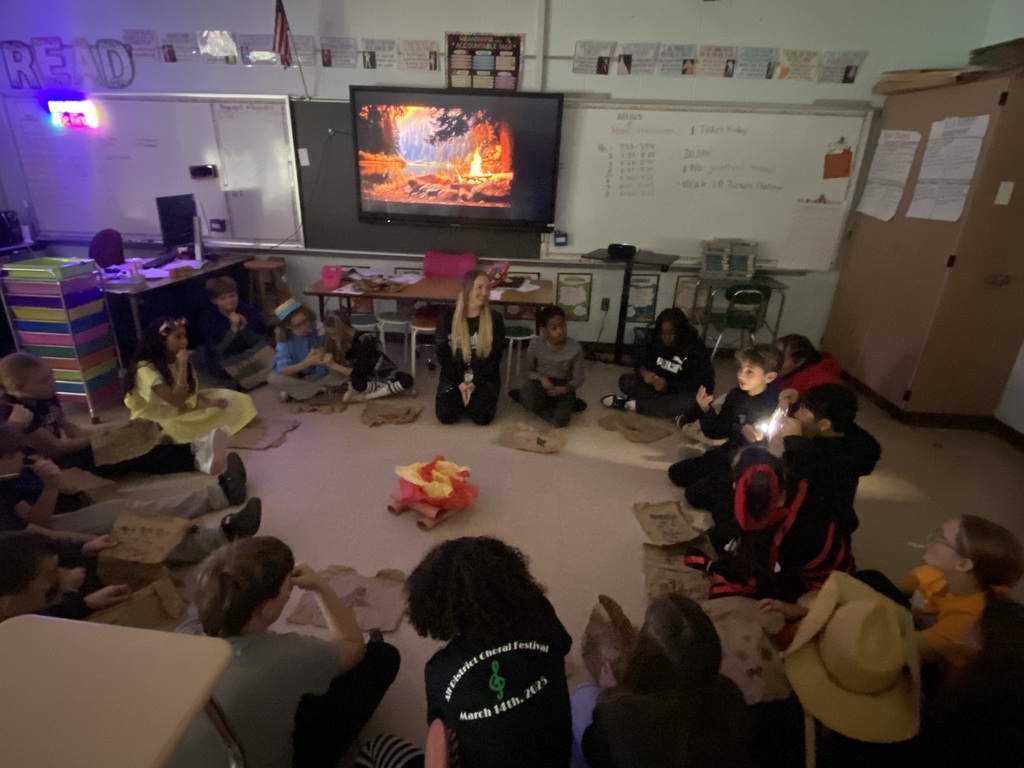
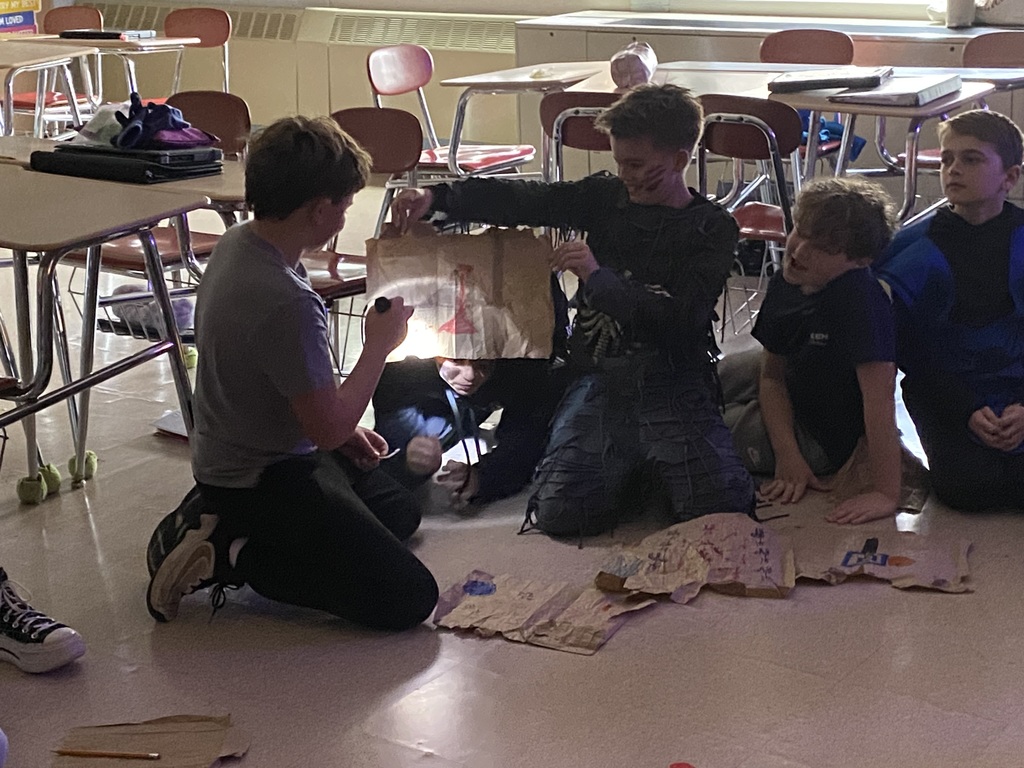
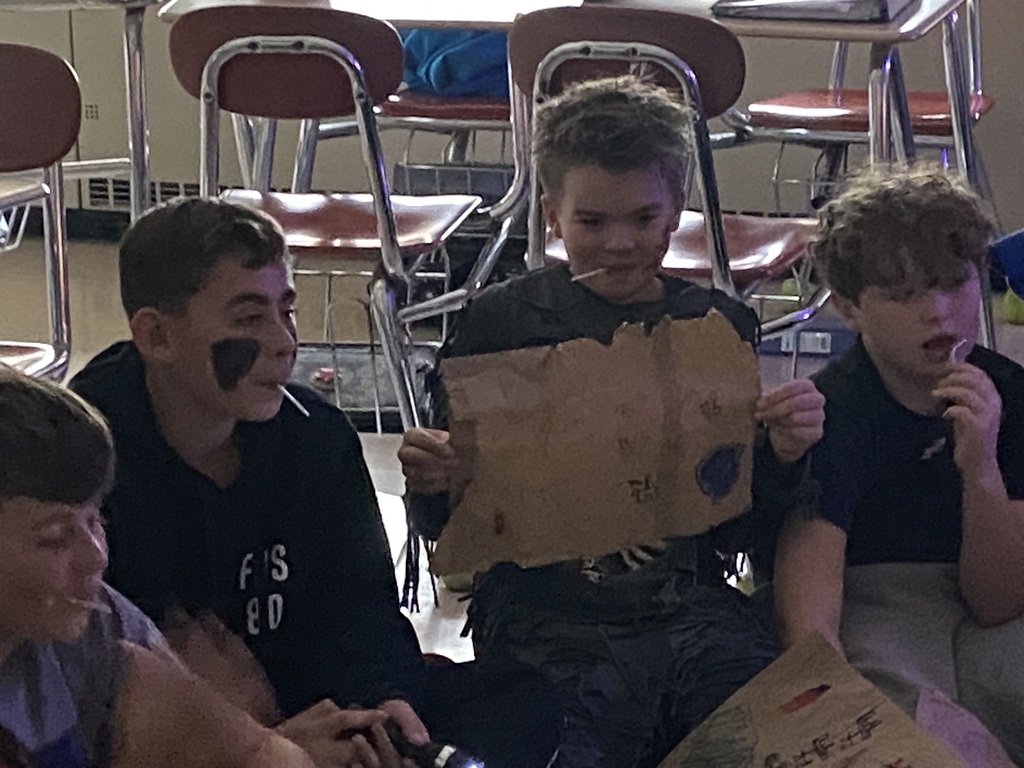
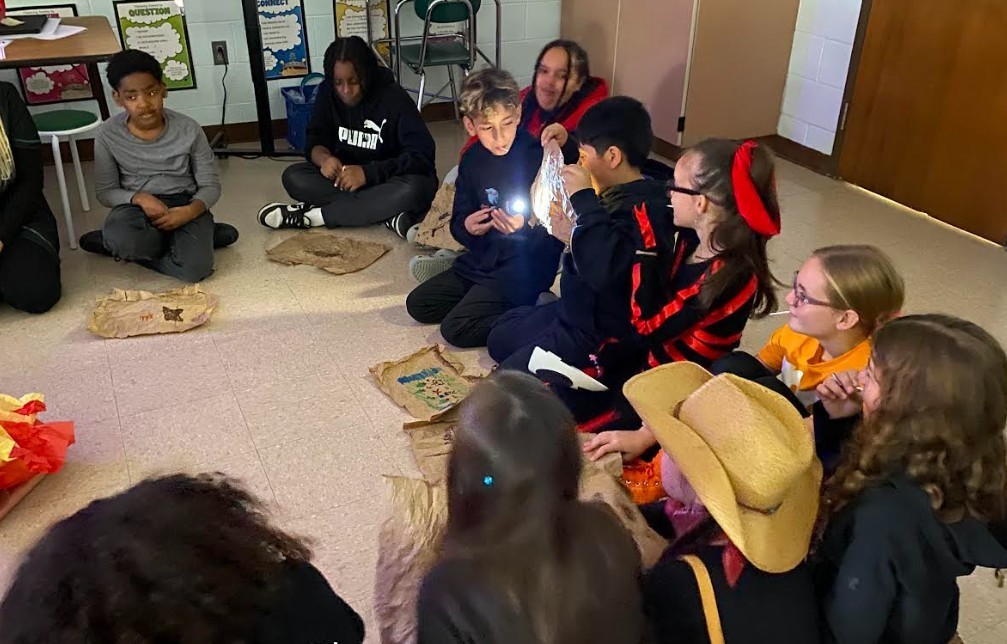
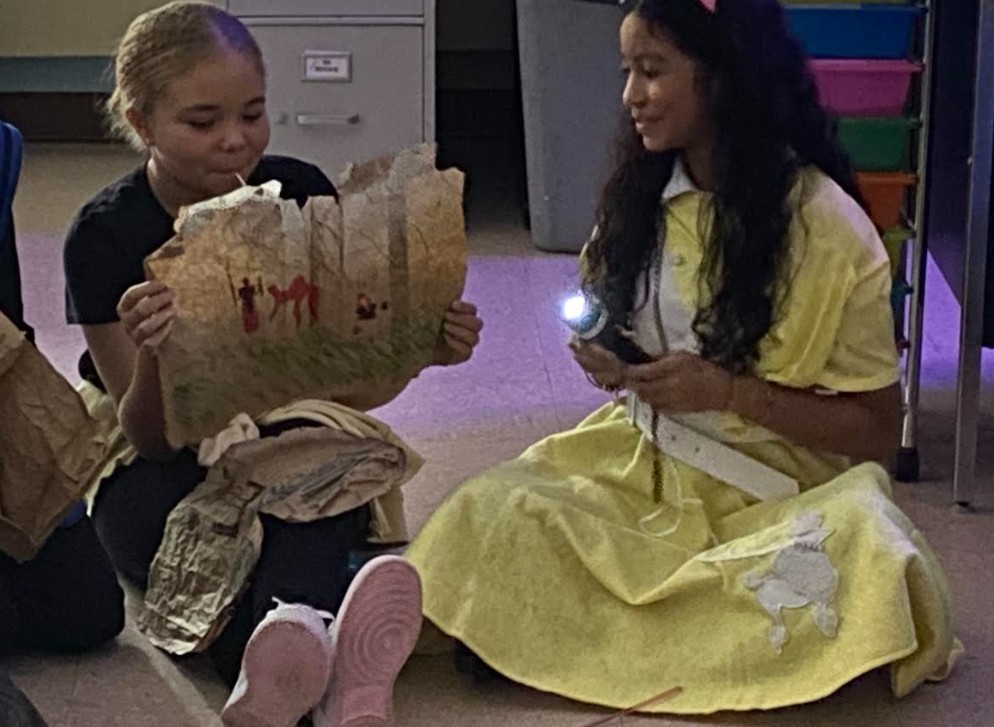
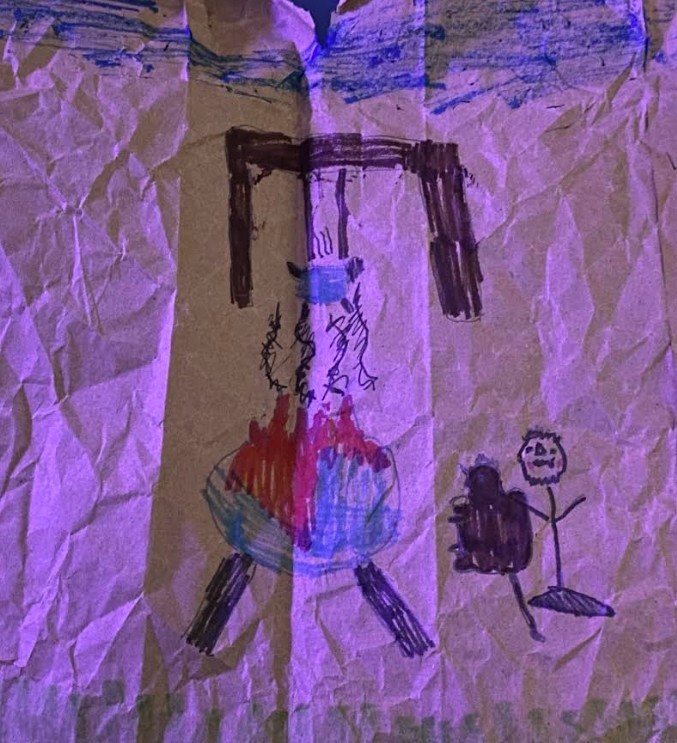
•A musical chord is a combination of three or more notes played simultaneously to create harmony. Teaching musical chords to first-graders benefits cognitive development by improving mathematical understanding, pattern recognition, and memory. Introducing chords early provides a strong foundation for more advanced music concepts and creates an opportunity for lifelong learning.
•A Boomwhacker is a color-coded, pitched percussion tube that creates different musical notes when struck against a surface. Longer tubes produce lower notes, while shorter tubes produce higher notes. These versatile instruments are popular in music education for their simplicity and for teaching rhythm and pitch in a fun, engaging way.
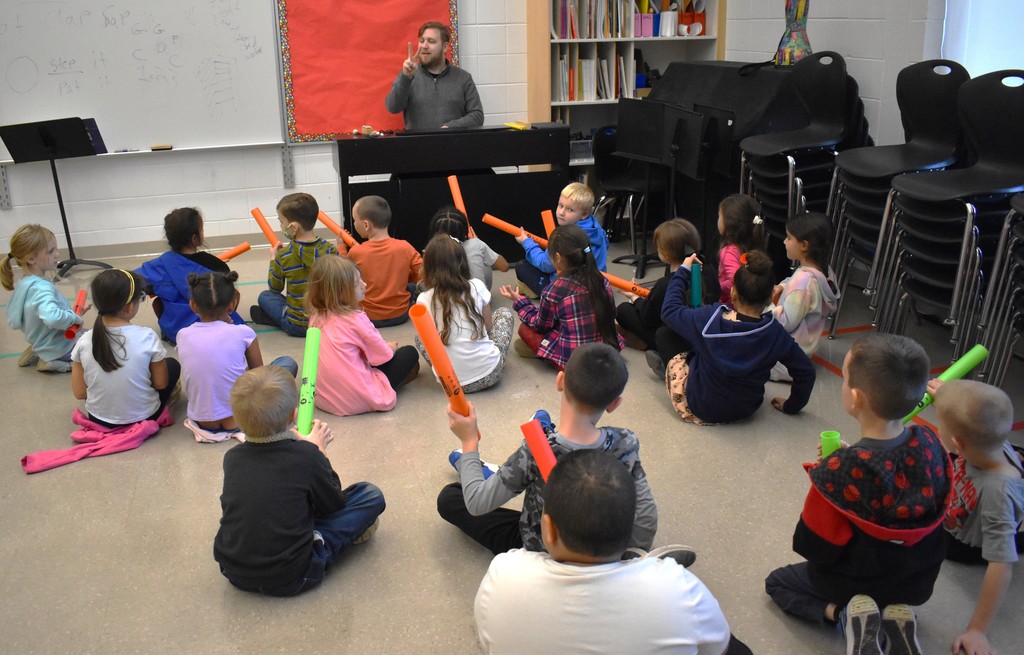
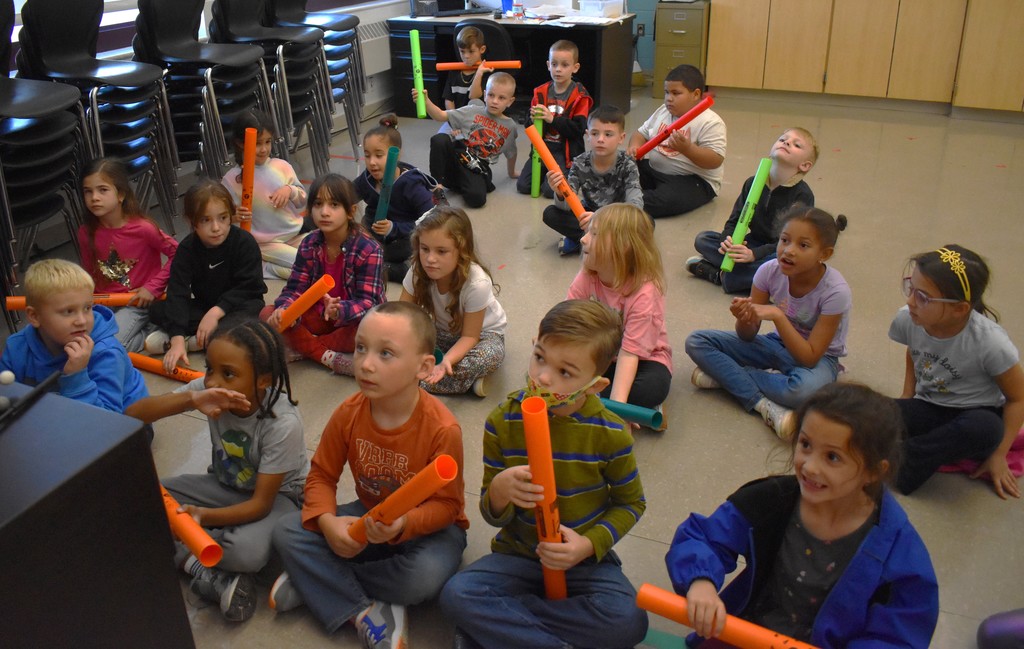
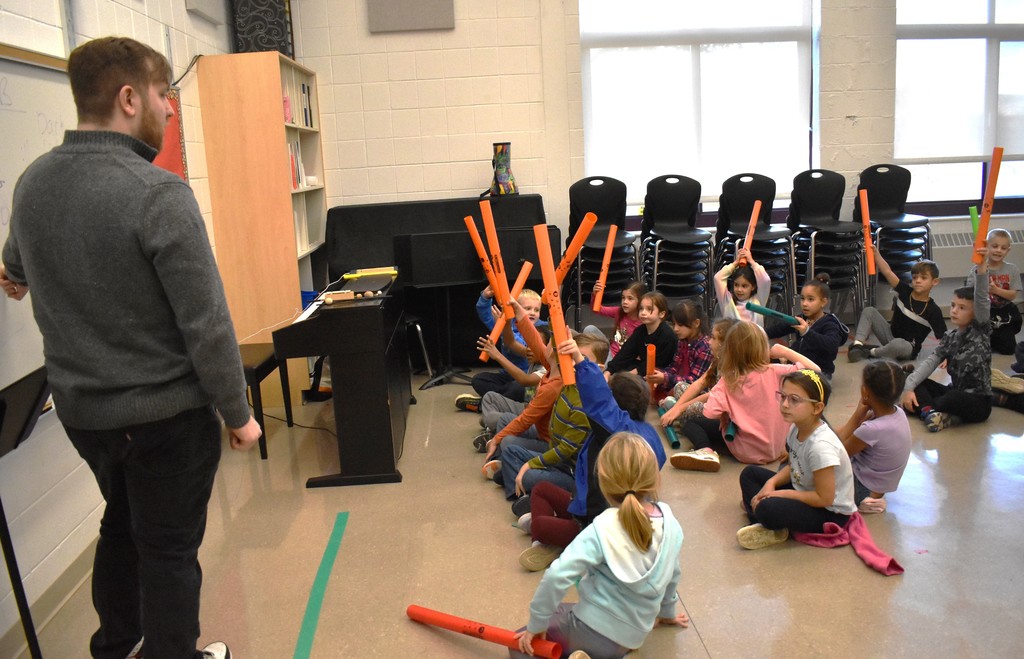
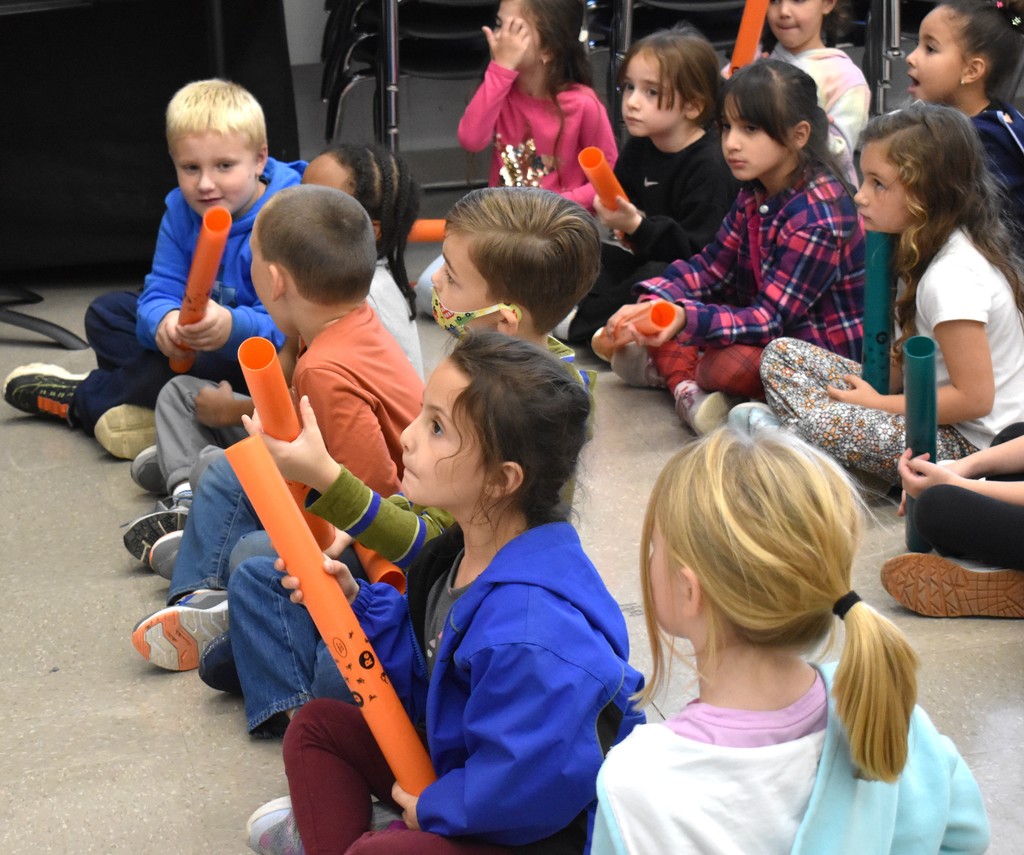

What these little cutie-pies don’t realize is that they’re working on their manipulative and coordination skills and spatial and body awareness.
Tossing and catching a scarf using one and two hands allows them to further develop hand-eye coordination. That’s because they’re tracking the movement of a floating object (the scarf) through space using their eyes and body. They’re also further refining balance and body control while reaching, turning, and bending with a scarf!
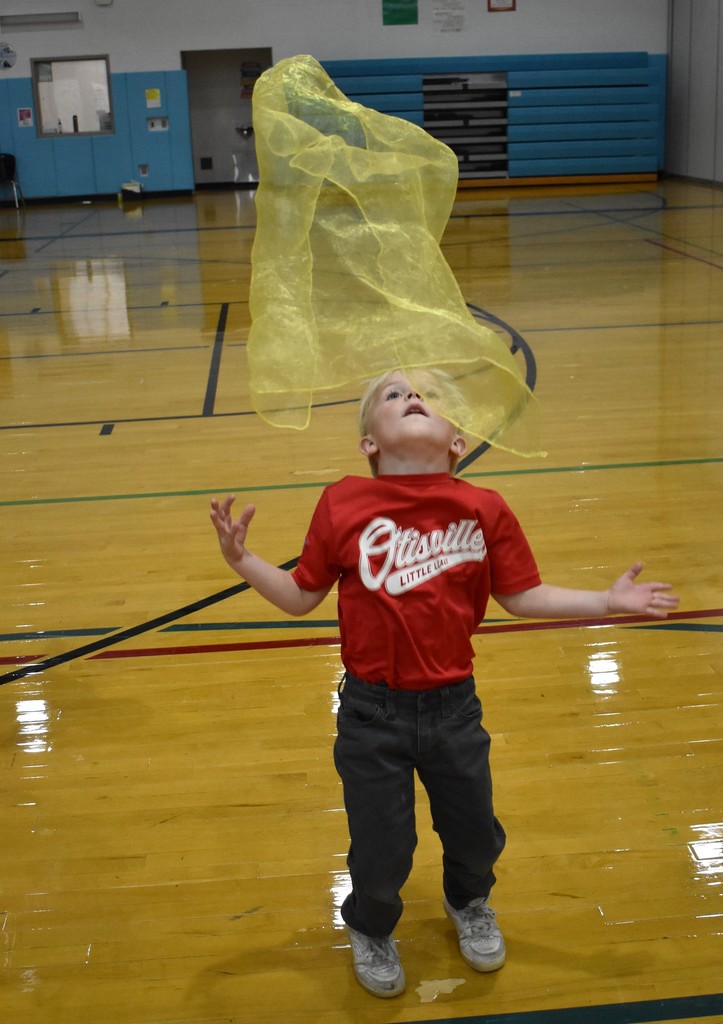
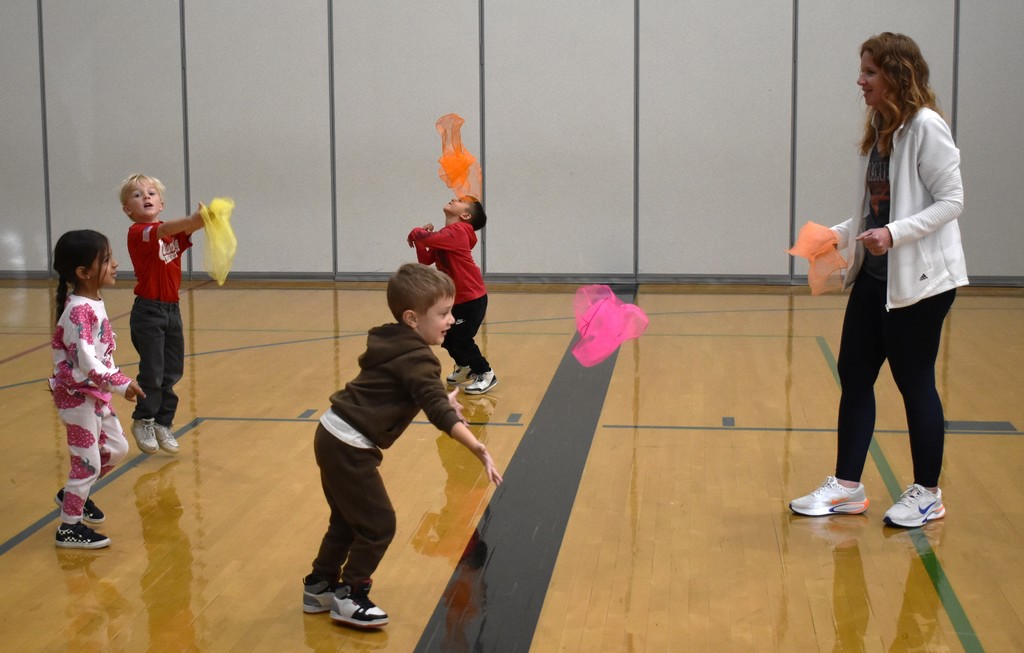
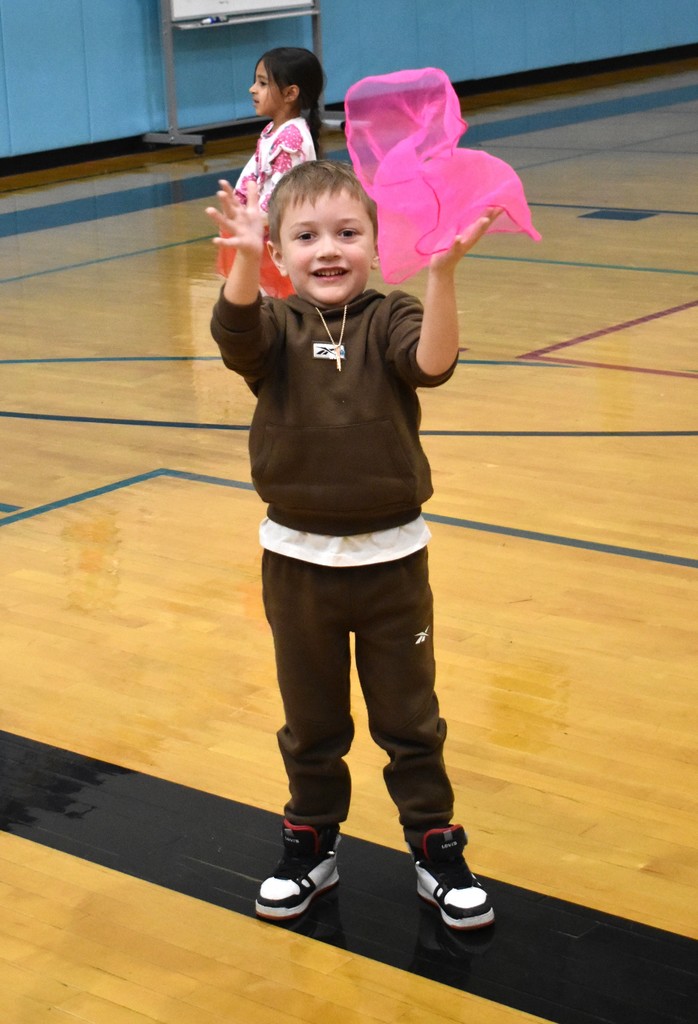
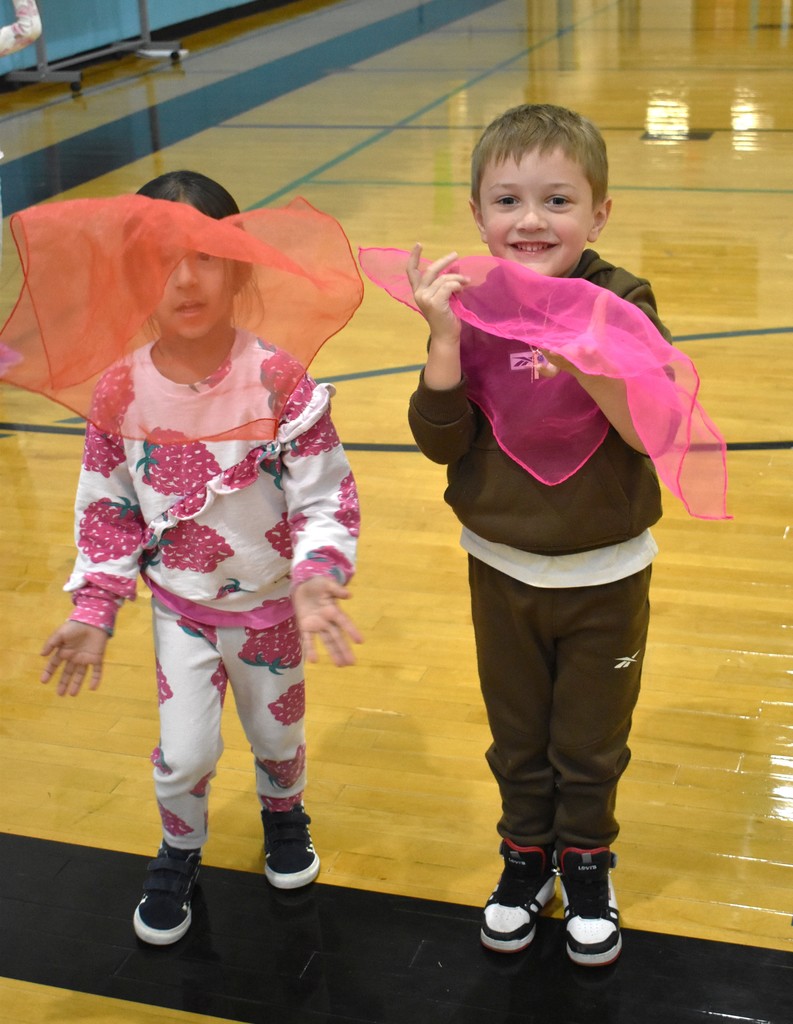
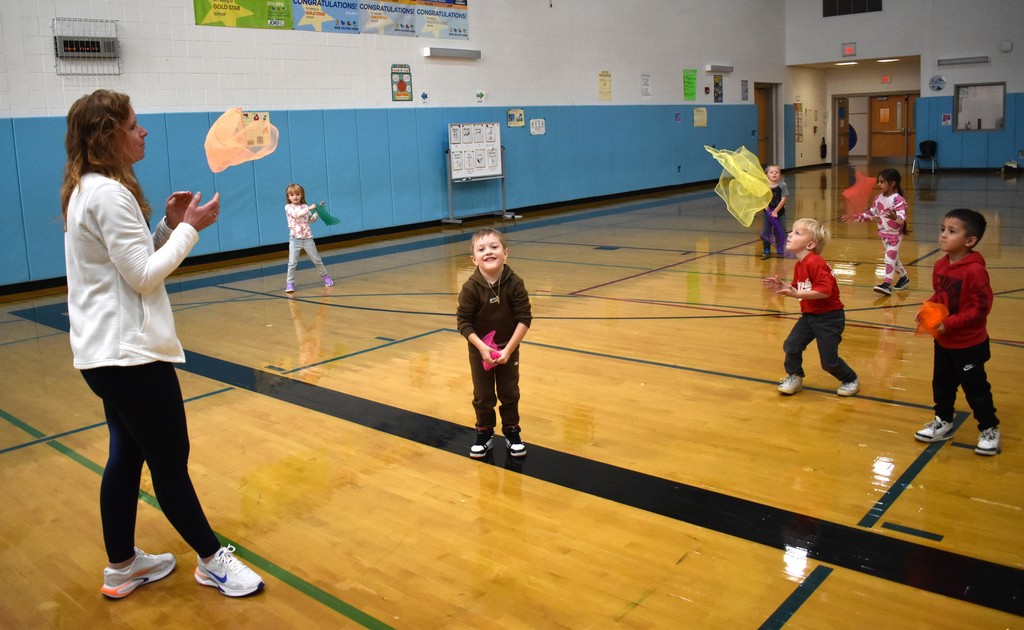
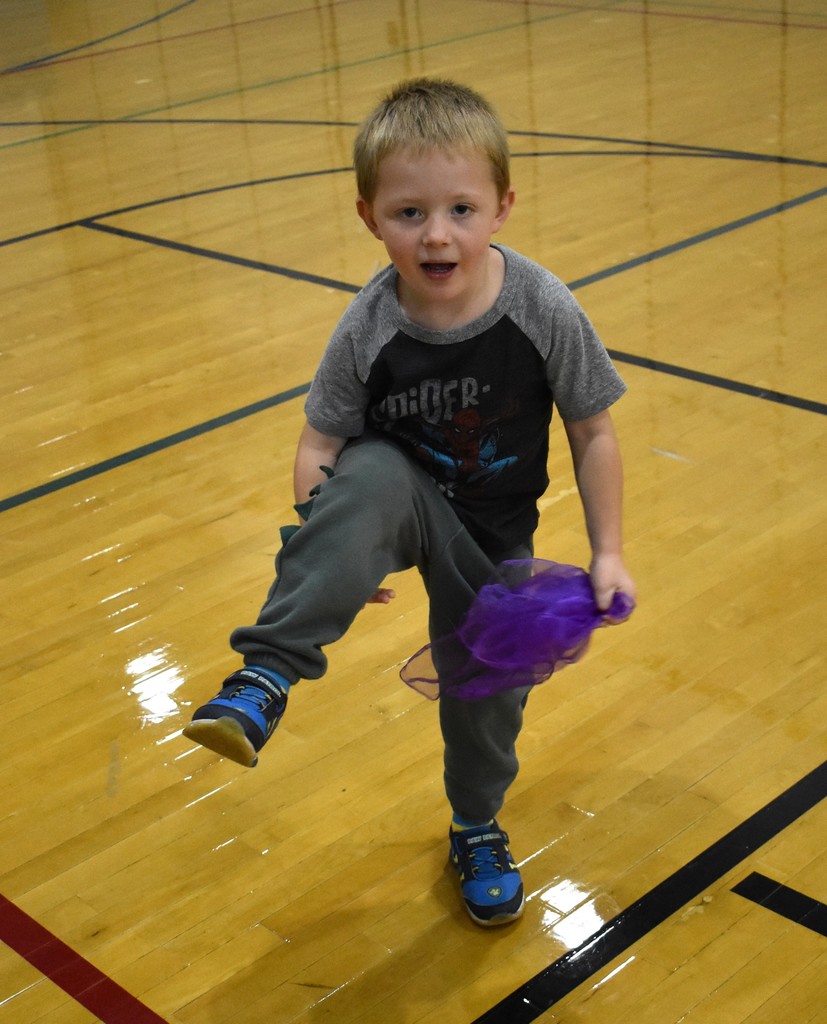
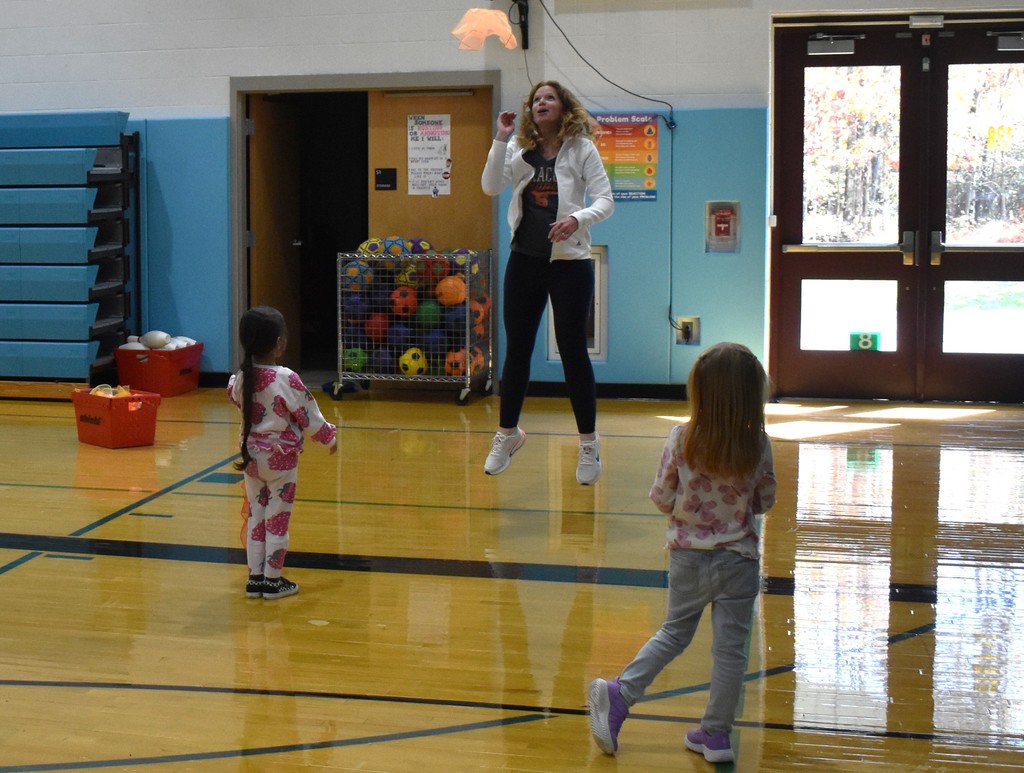
The High School’s National Honor Society hosted its annual Veterans Dinner on Nov. 5, to honor local veterans as Veterans Day nears. It was a wonderful opportunity for students to honor and show gratitude to local veterans for their service and sacrifices, while giving NHS members an opportunity to express patriotism, practice civic responsibility and connect with their community by hearing firsthand accounts of bravery and service.
Thank you to all NHS members, including Gavin McGinnis, Faith Padavano, Hana Ebbert, and Heather Day, who sang the National Anthem; members of the high school band, led by Mitchell Demberg, for their musical performance, and Vincent Galligan IV, who played Taps, for their work to make the evening memorable. Most importantly, thank you to our many veteran friends for attending and THANK YOU for your service and sacrifice.
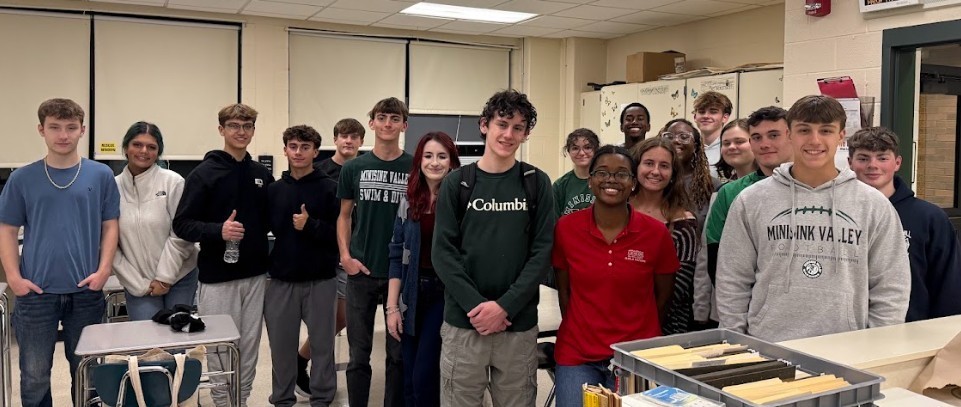
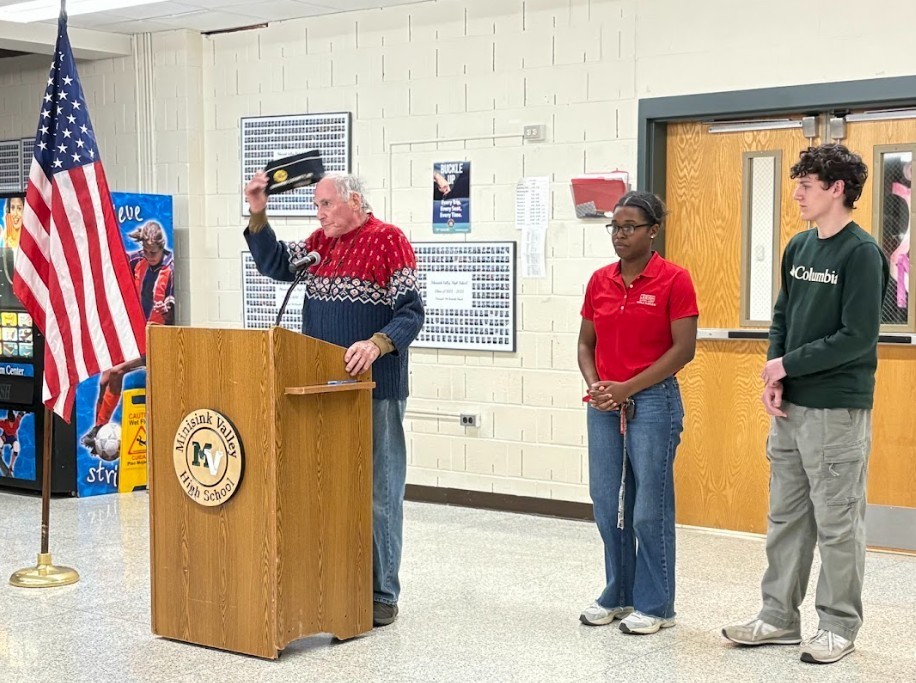
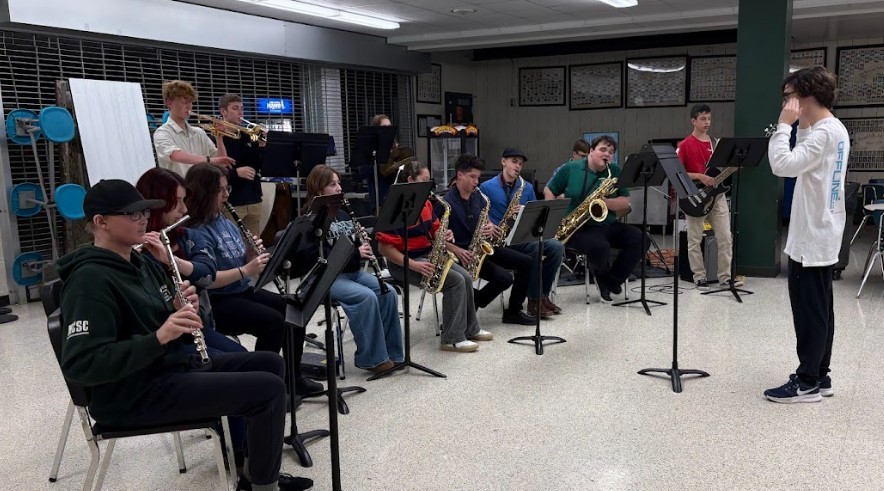
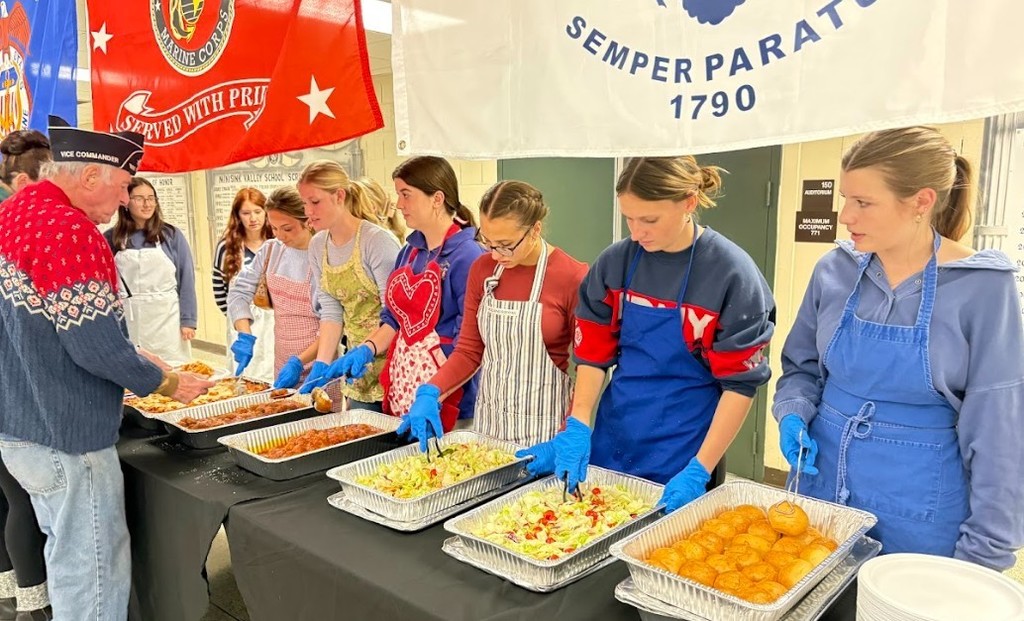
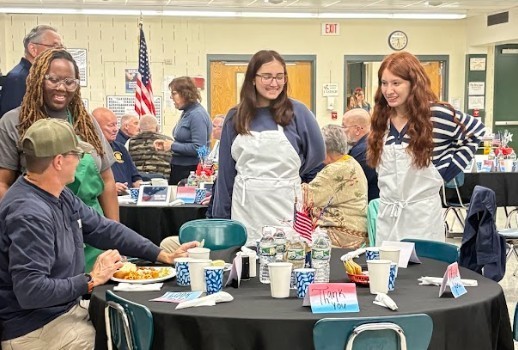
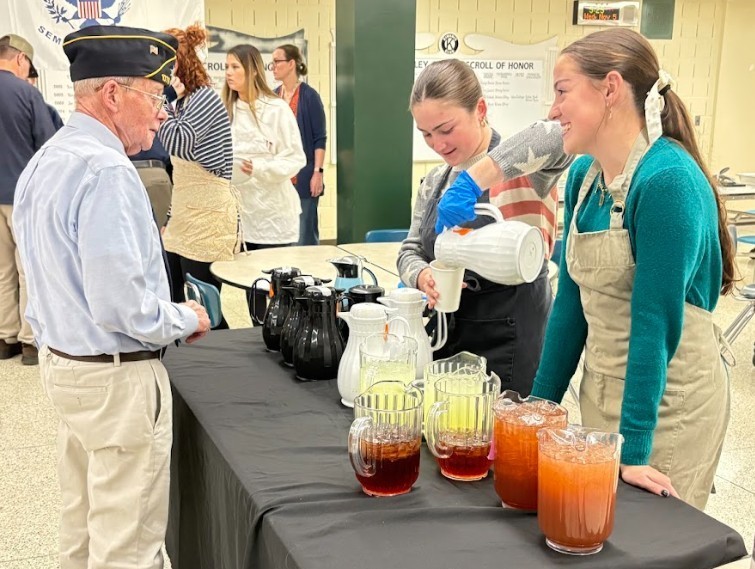
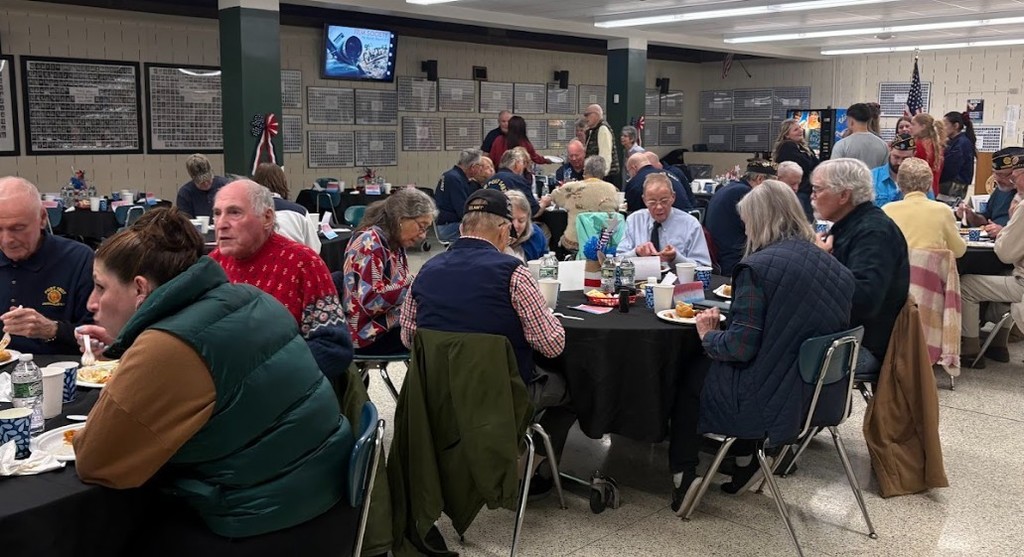
Part of their work has been working through the scale size of the solar system. Mr. Napolitano “shrunk” the Sun and other terrestrial planets by a factor of one inch = 100,000 miles. This makes the Sun approximately the size of a bowling bowl while Earth and Venus are about the of a peppercorn.
In a class lab, students had to use this scale to correctly place Mercury (the size of a pinhead) the correct distance from the Sun…in seven minutes’ time! At the end of that time, some groups determined that Mercury should be placed approximately 30 feet away from the Sun using this scale.
Then, Mr. Napolitano took his classes outdoors. Using a bowling ball to represent the Sun (and its scaled size), students did distance calculations from the Sun using scaled sizes for Mercury, Venus, Earth and Mars. A student walked 10 paces away from the bowling ball to simulate the distance from the Sun to Mercury; an additional nine paces for Venus; an additional 17 paces for the Earth; and an additional 14 paces for Mars. When students moved to the Earth’s distance from the Sun (36 total paces), the bowling ball (Sun) would appear in the students’ point of view as the same size the Sun does in the ski.
This outdoor work definitely gave them a perspective of how big the universe, how far planets are from the Sun and the size of the Sun in relation to its planets.
And, just for fun, Mr. Napolitano told them the travel time needed to reach some of those planets:
•Earth’s Moon: Three days and 4 hours to travel
•Jupiter: Five years
•Pluto: Straight travel time and speed 43 years (with using gravity from other planets, 9.5 years)
•To the closest star called Proxima Centauri (4.2 light years away): 60,000 years using our current technology (And, on this scale, using the Sun as a bowling ball, Proxima Centauri would be 4,200 miles away from us.)
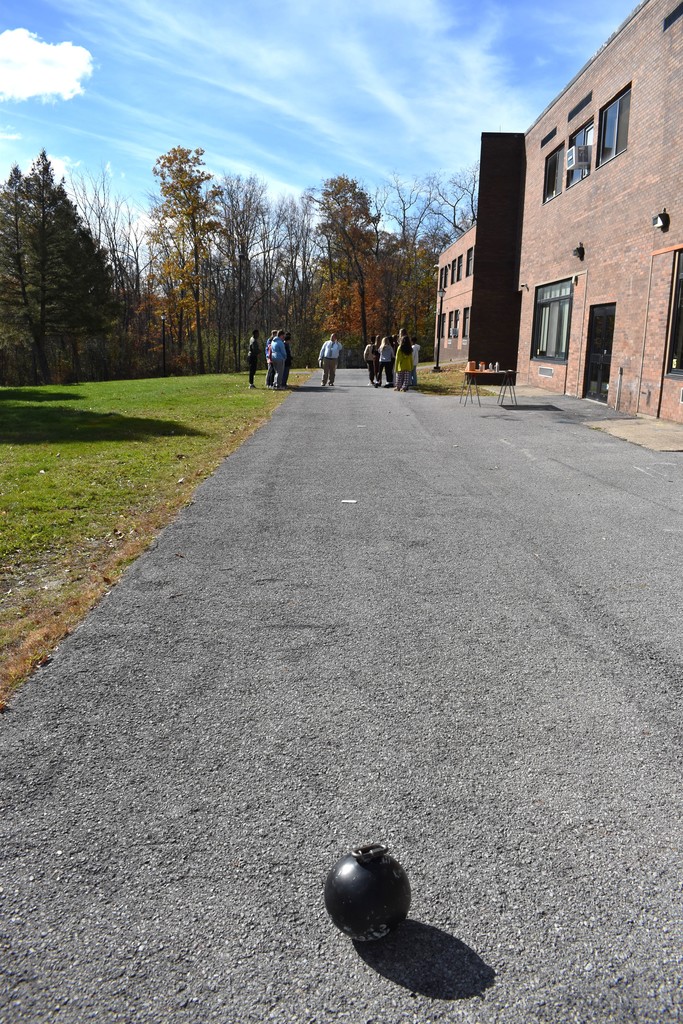
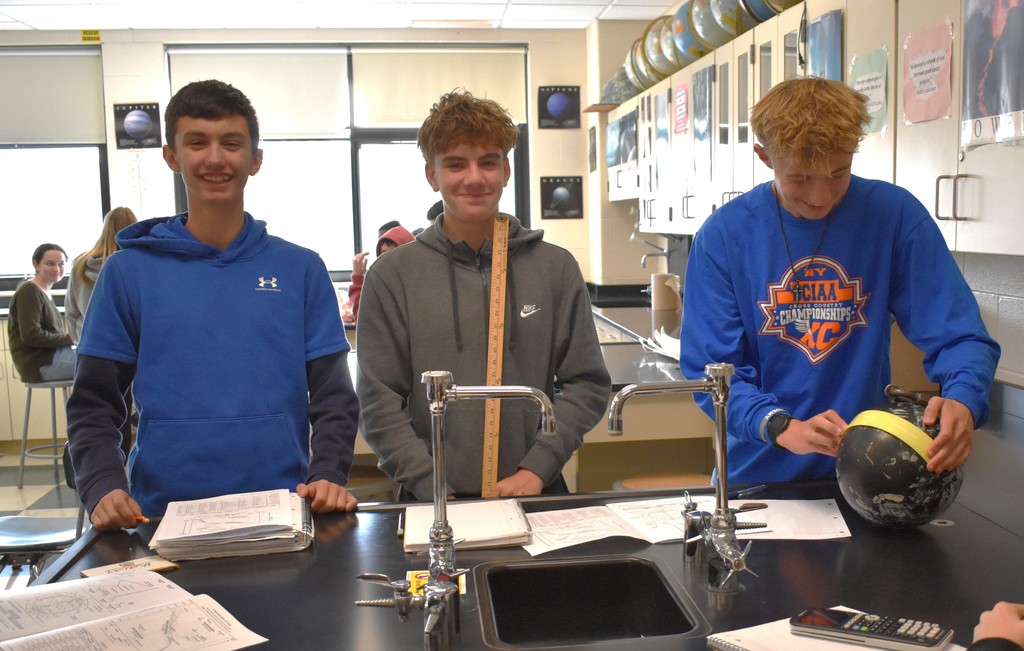
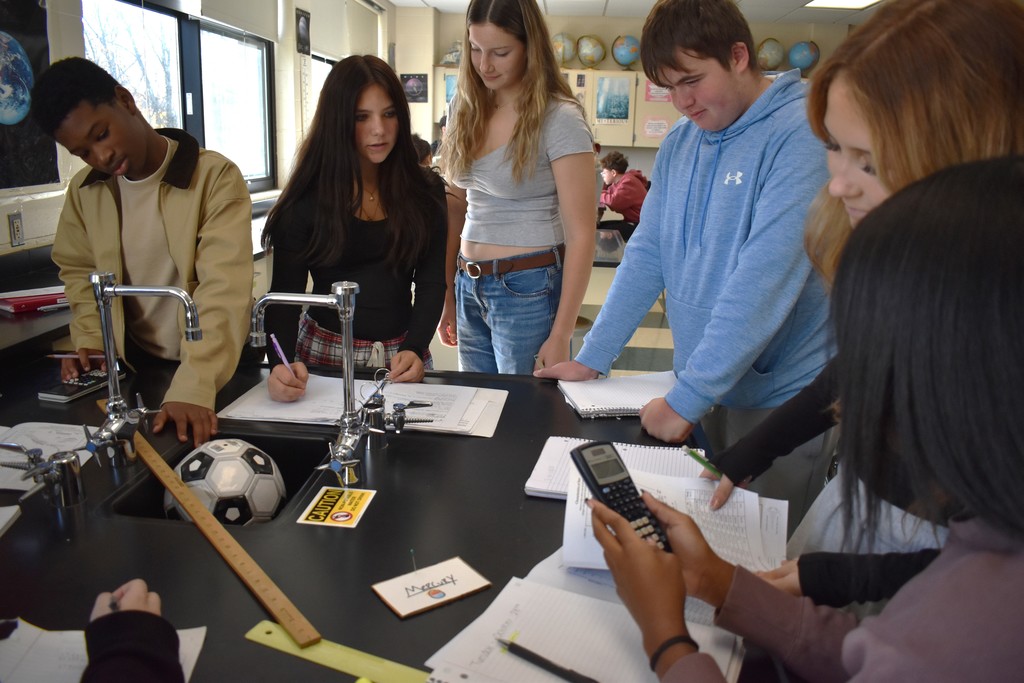
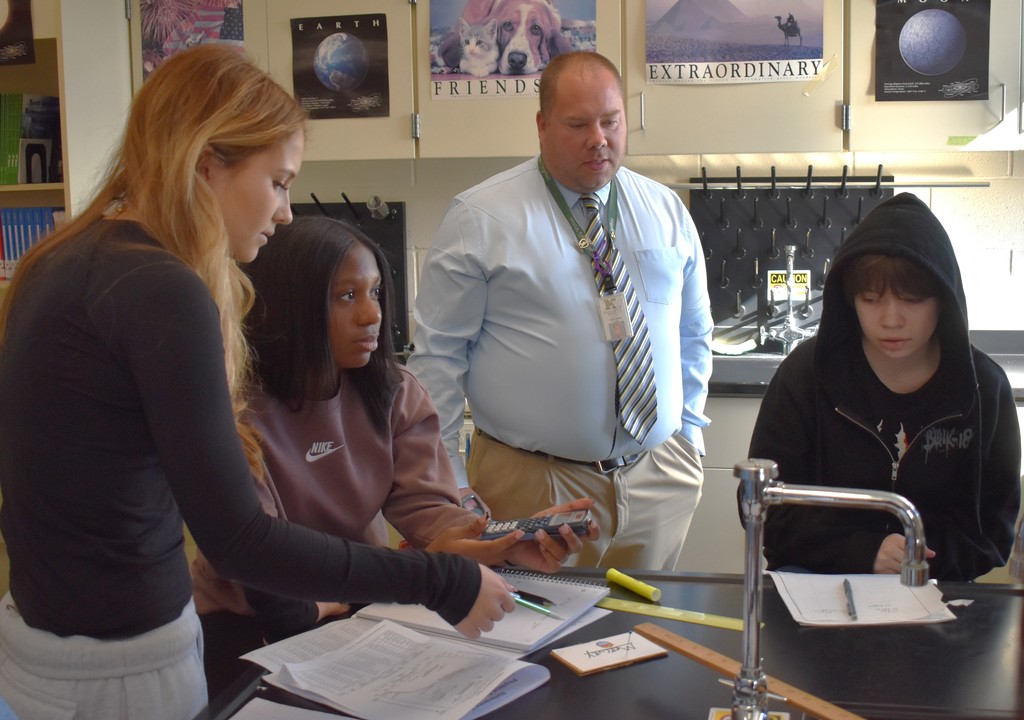
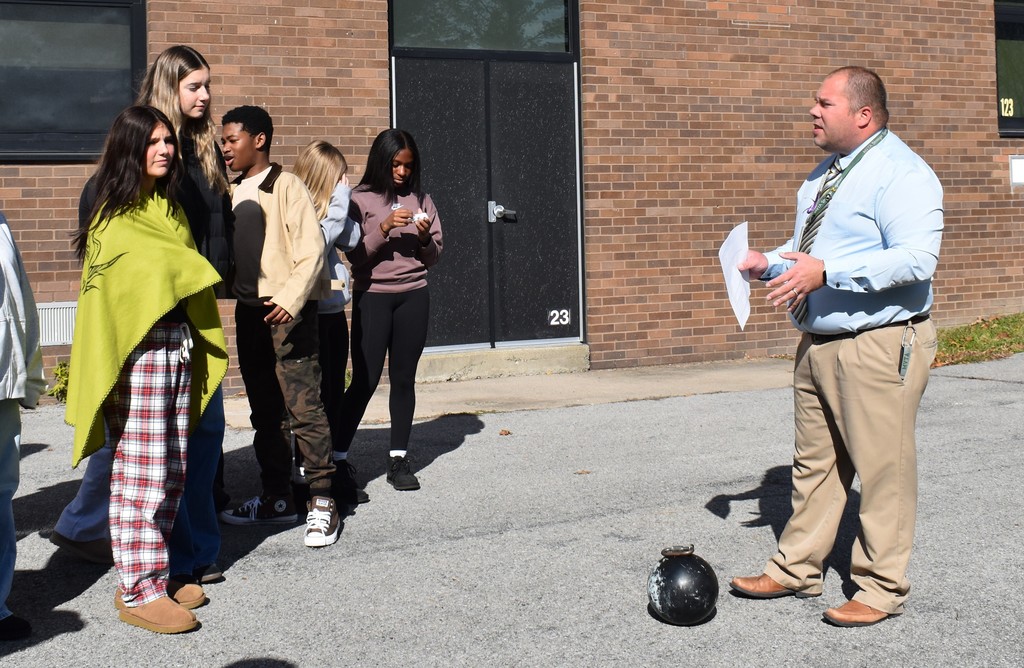
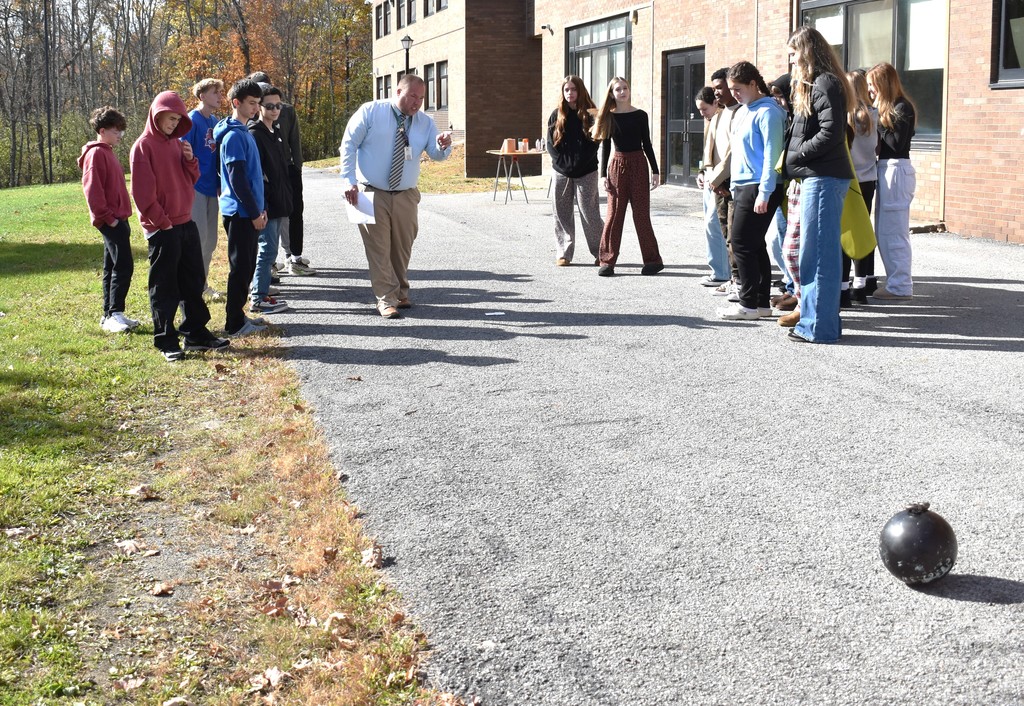
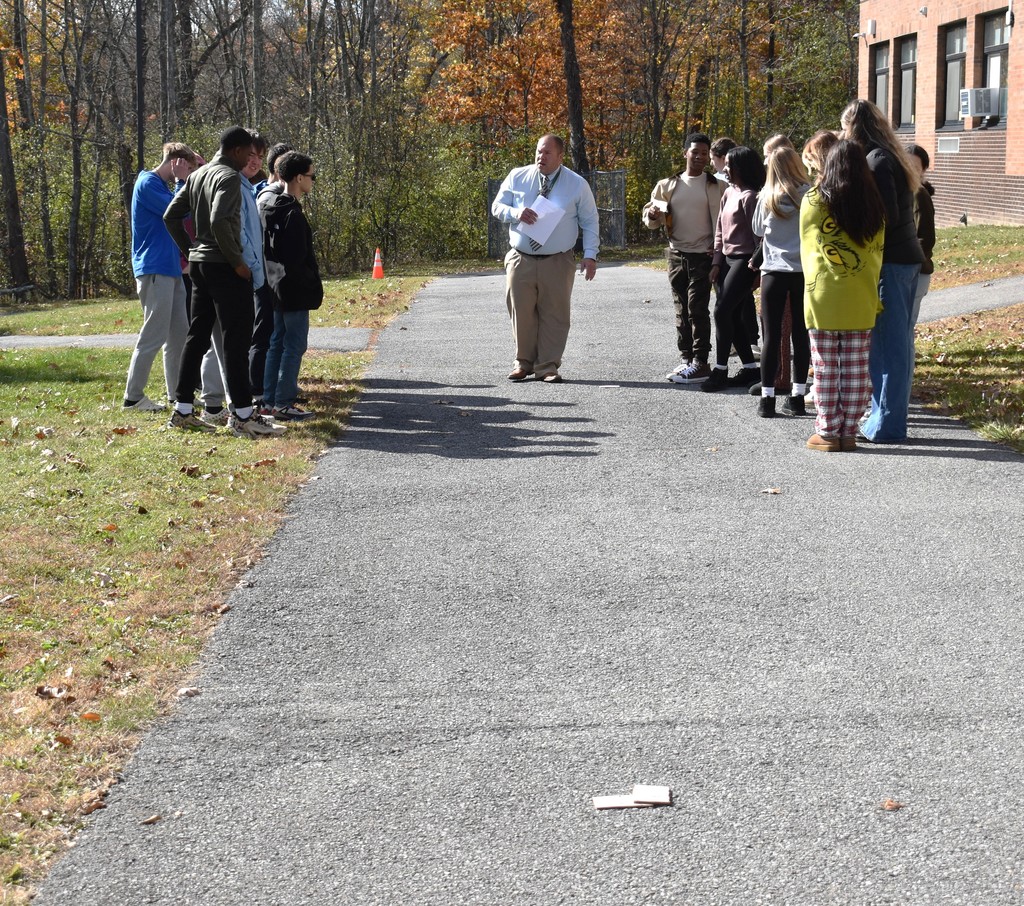
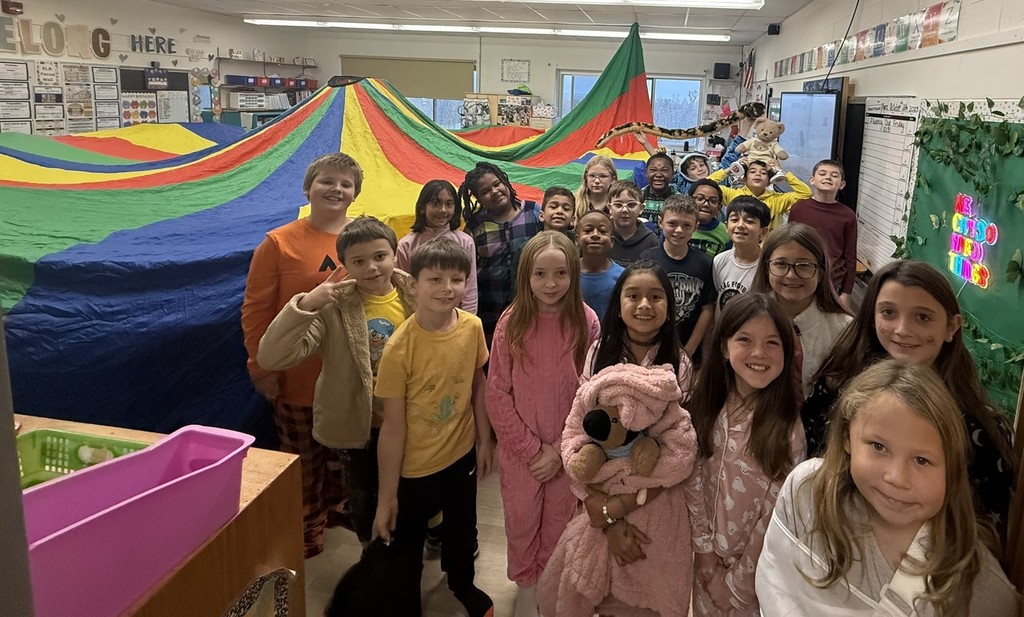
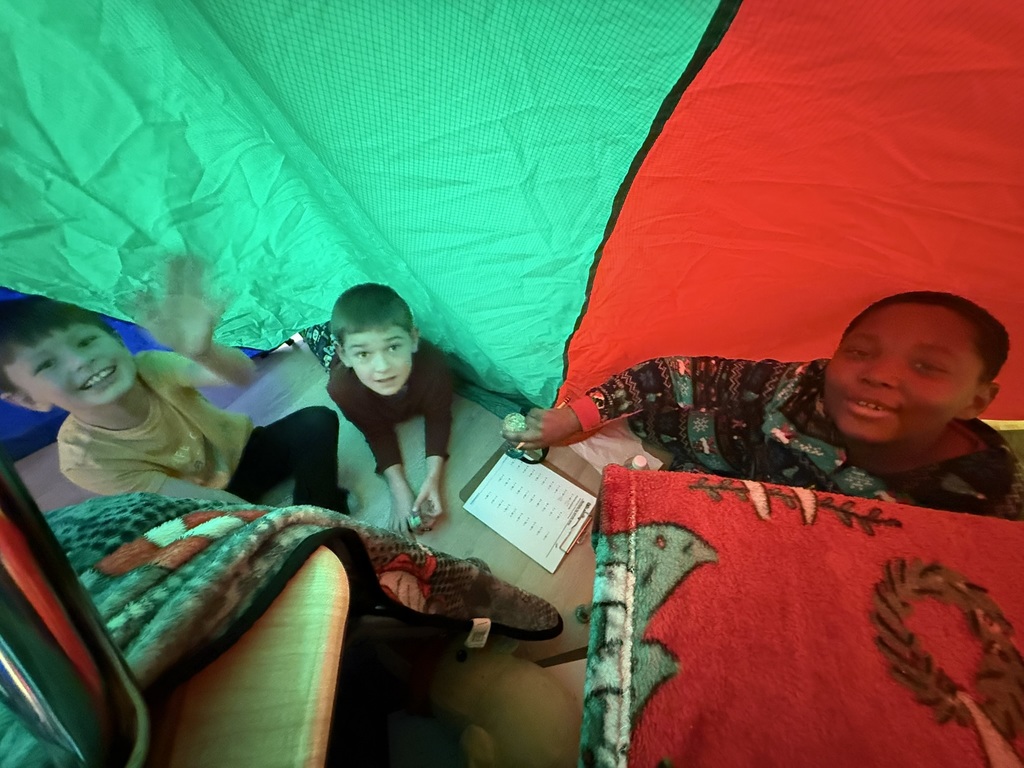
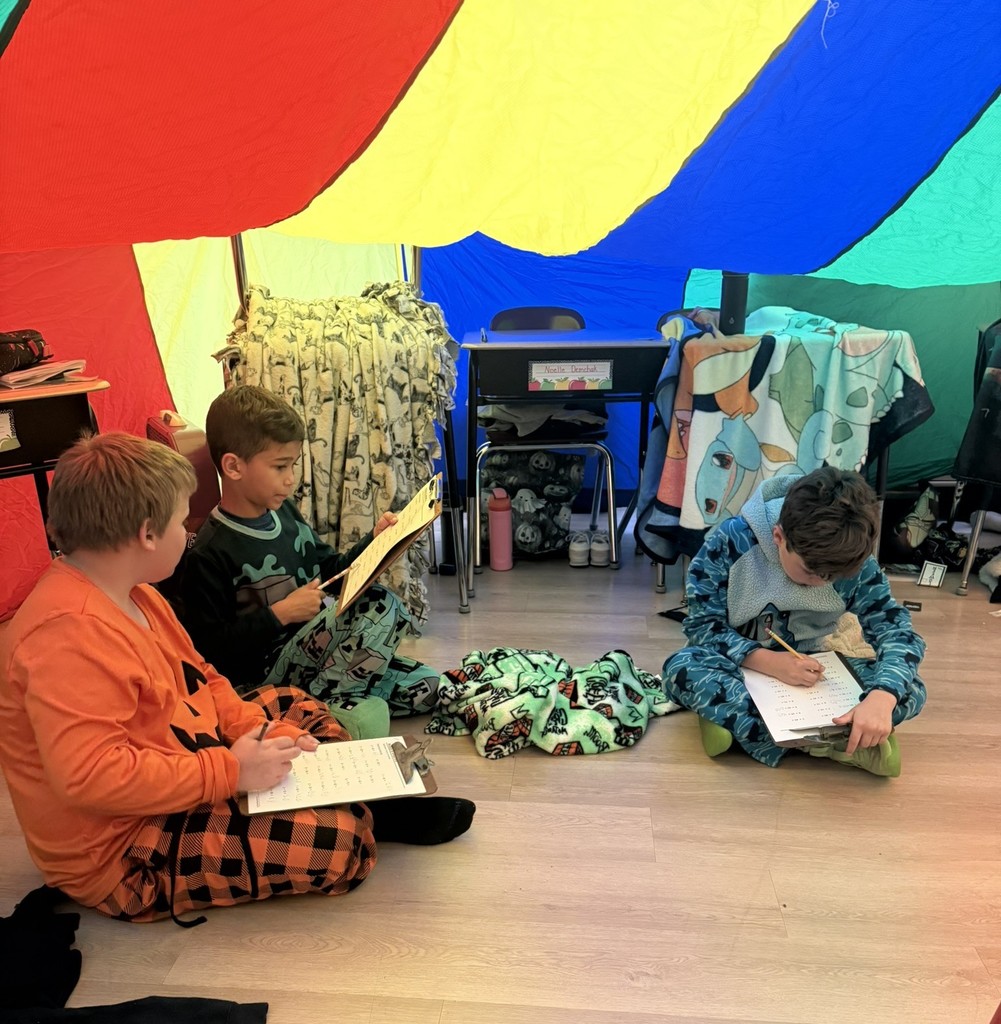
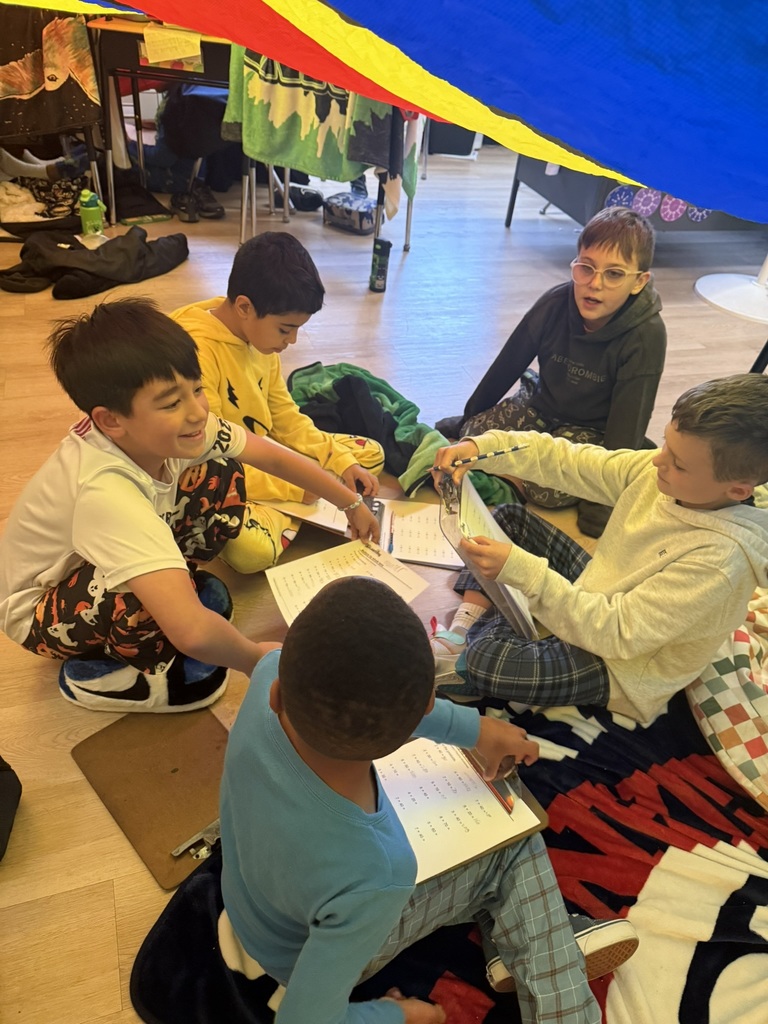
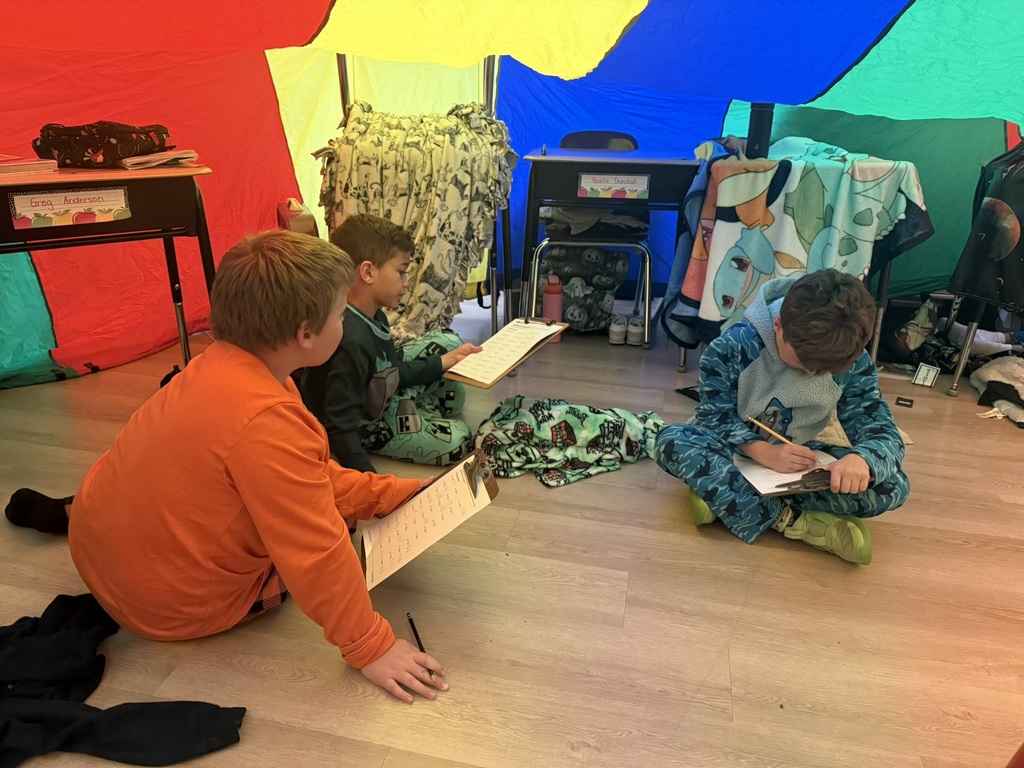
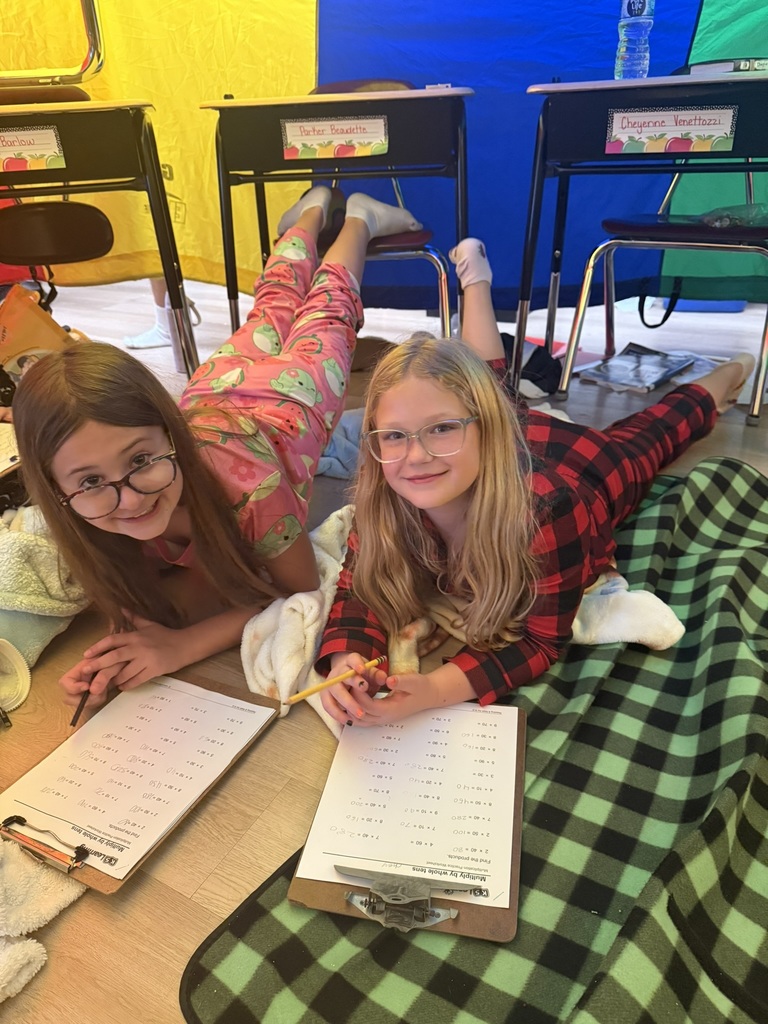
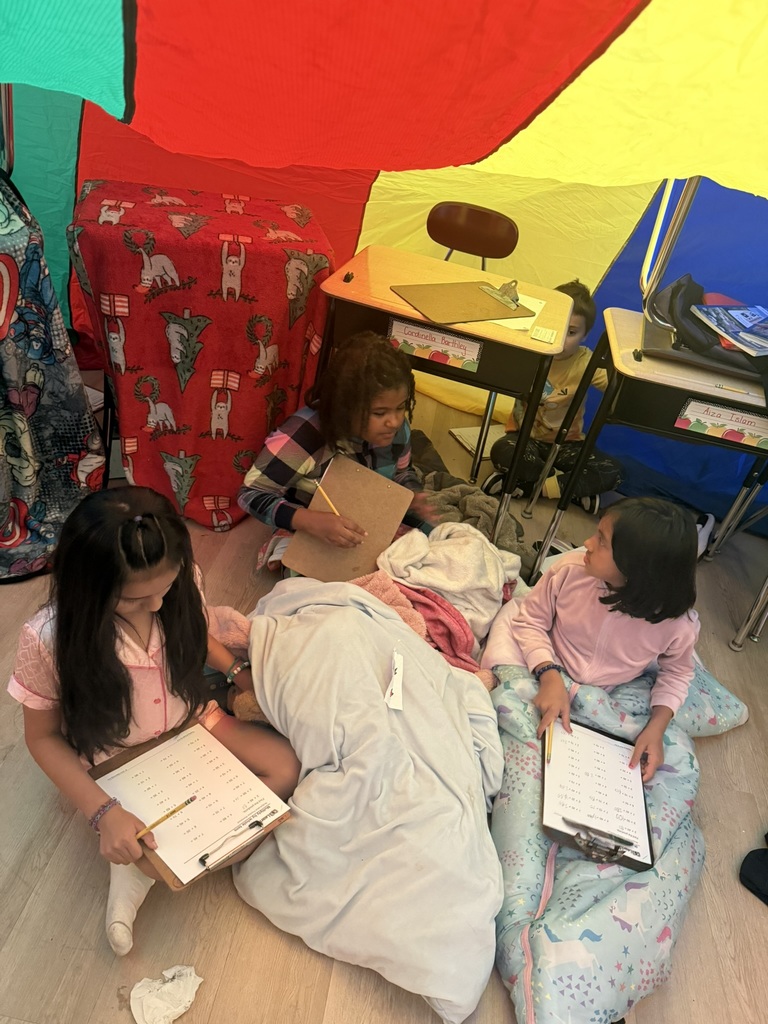
#9 Captain Ava Downing
Ava has been on the Minisink girls’ varsity soccer team for five years. Next year, Ava will pursue a nursing degree at SUNY Orange. Ava’s parting message: “Thank you Minisink soccer for the valuable lessons, happy memories, and most importantly --- a family. I am so grateful for all of my coaches and teammates who have helped me along the way. This was the best senior season I could ever ask for, and I am going to miss you all so much.”
#15 Keira Filip
Keira has been a member of the varsity girls’ soccer team for three years. She is still making her college selection, but plans to play softball and study nursing. Keira’s parting words are: “Thank you for all the laughs and jokes. Enjoy every little bit and keep on smiling and have fun!”
#12 Samantha Kassel
Sam is finishing her third year on varsity girls soccer. Next fall, Sam will attend the University of Rhode Island where she will study Biology. Sam’s parting words are: “You are exactly where you’re meant to be. Enjoy every moment and always seize the day!”
#6 Jazlin Luna
Jazlin has played on the varsity team for two and half years and she plans to pursue a degree in Elementary Education at LaFayette University. Jazlin’s parting message is: “Thank you to everyone for your support on the team, the laughs and help I received both at practice and on the field. I’m thankful for the time spent this season and wish nothing but the best to every player moving forward. “
#2 Jaida Macaluso
Jaida has been on the Minisink girls’ varsity soccer team for five years. Next year, she plans to major in Education of Arts. Her parting message: “Life is a movie. Don’t blink, you might miss it.”
#1 Captain Kate O’Neill. Kate has played on the varsity team for six years. In the fall, Kate will attend Misericordia University where she will play soccer and pursue a degree in Education. Kate wishes to say to her team: “Thank you all for great laughs and memories! It goes by so fast. Remember to have fun, work hard and be kind. Love you all!”
#16 Captain Olivia Pollock
Olivia has been on the Minisink girls varsity soccer team for four years. In the fall, she will pursue a degree in medical imaging. Olivia’s parting message: “It’s not about being the best, it’s about trying your best.”
#10 Avery Wingen
Avery has been on our varsity soccer team for two years. Next year, Avery would like to major in Education. Avery’s parting words: “I've made so many friends and memories with this team. Remember to play hard, keep laughing, and don’t take it for granted.”
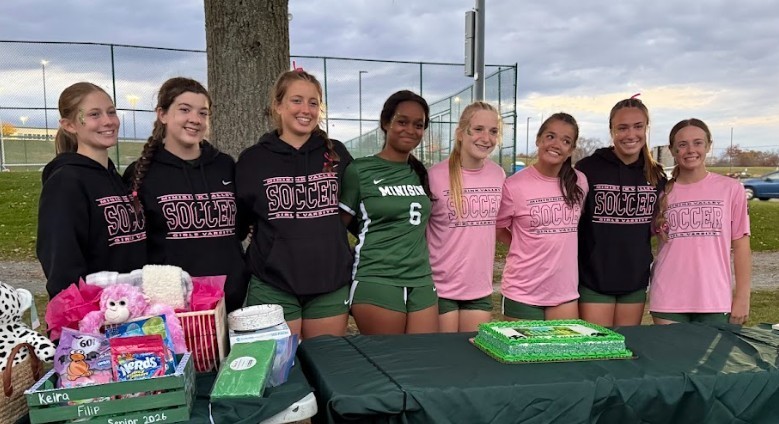
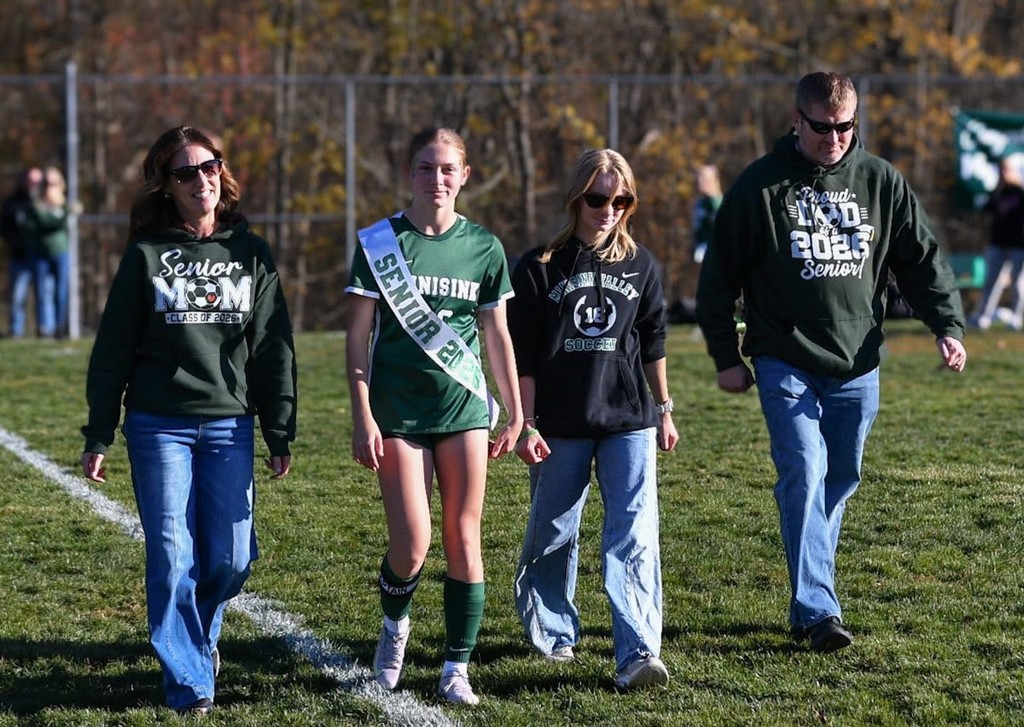
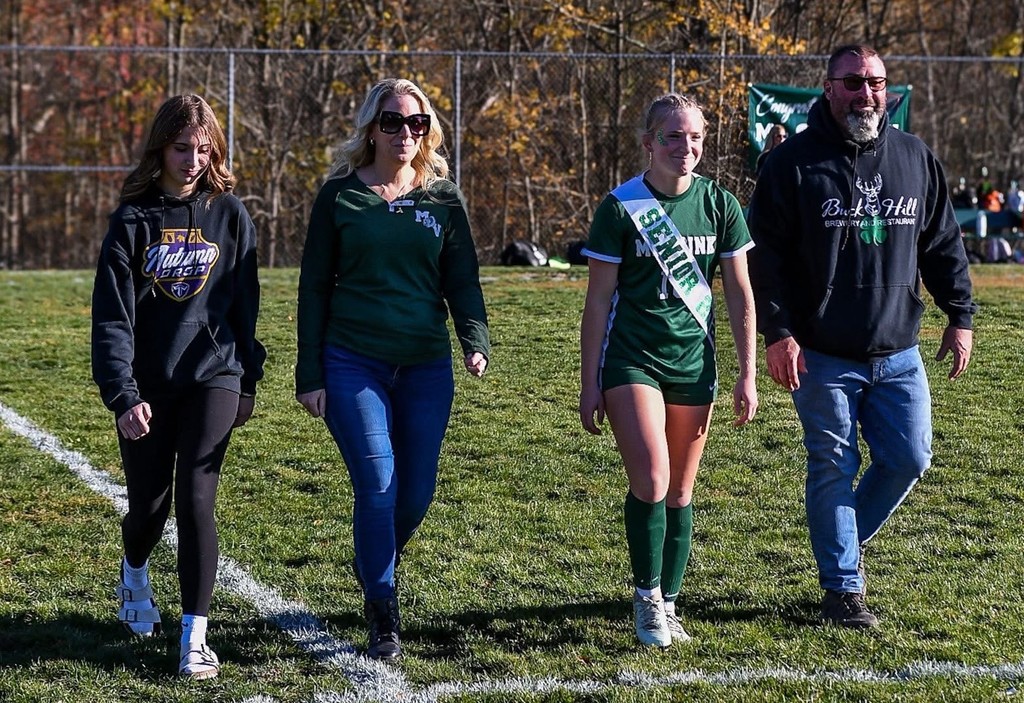
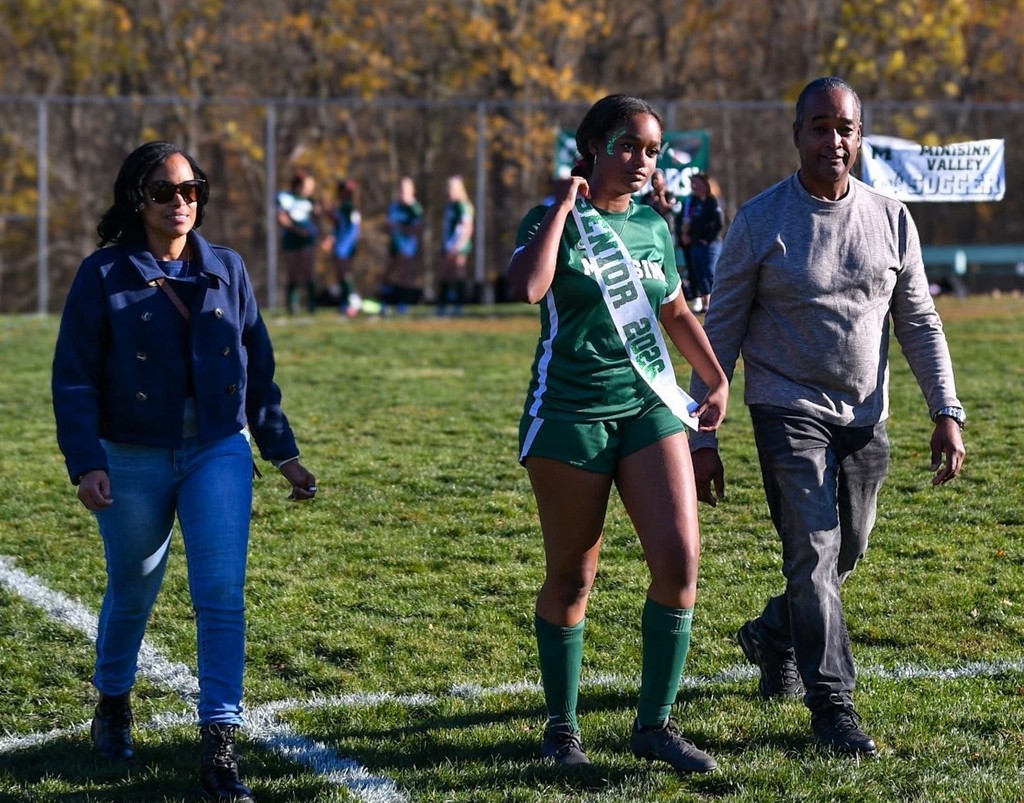
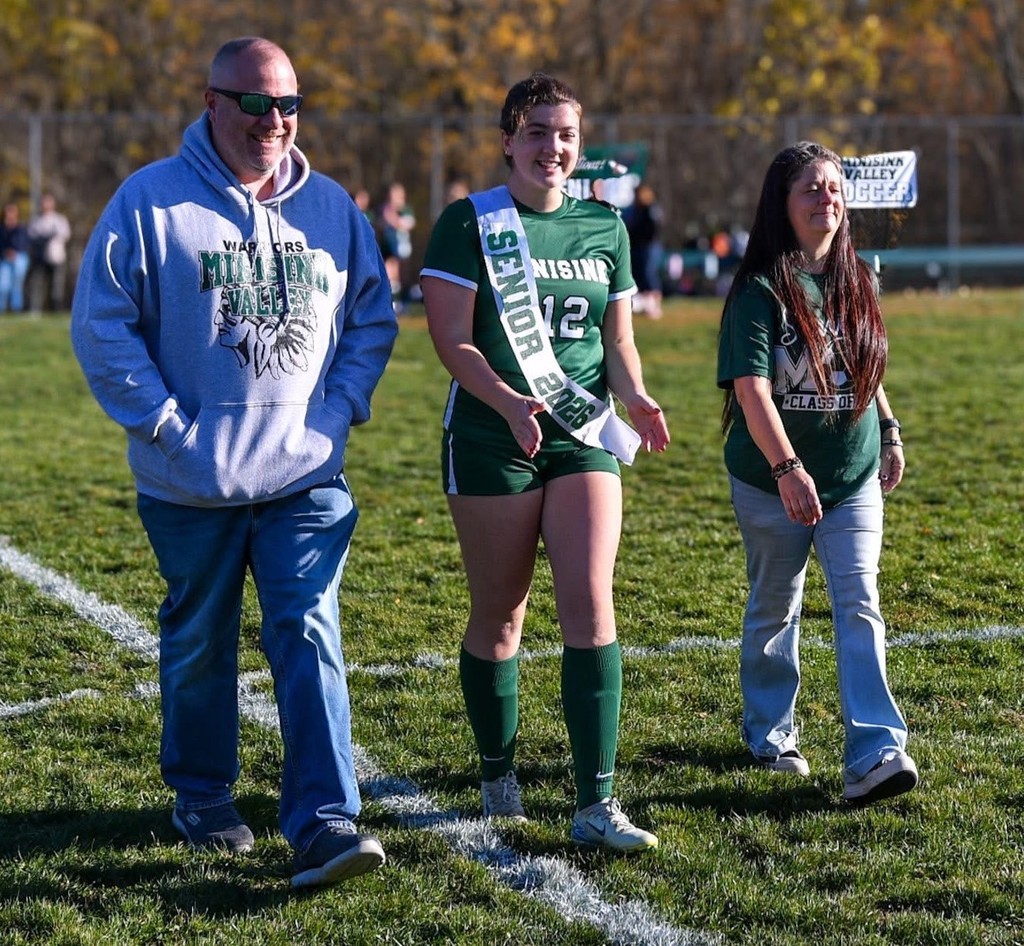
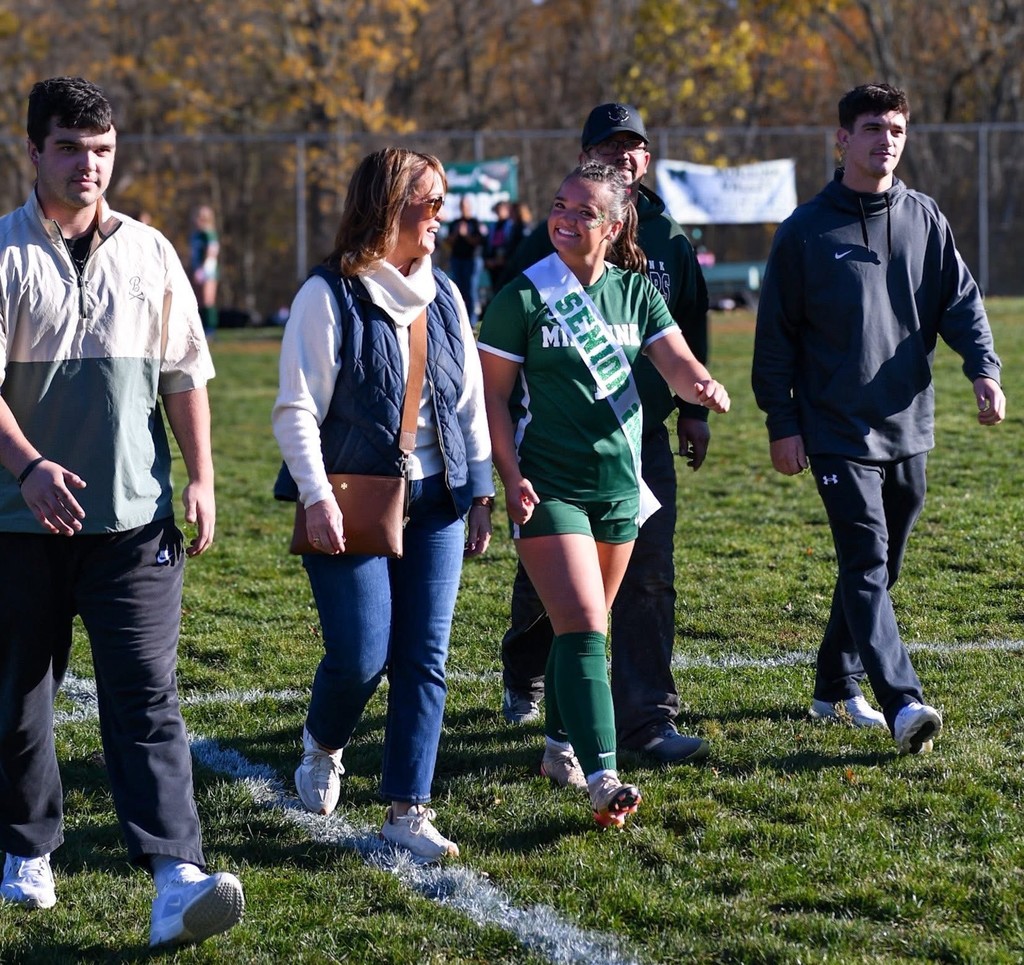
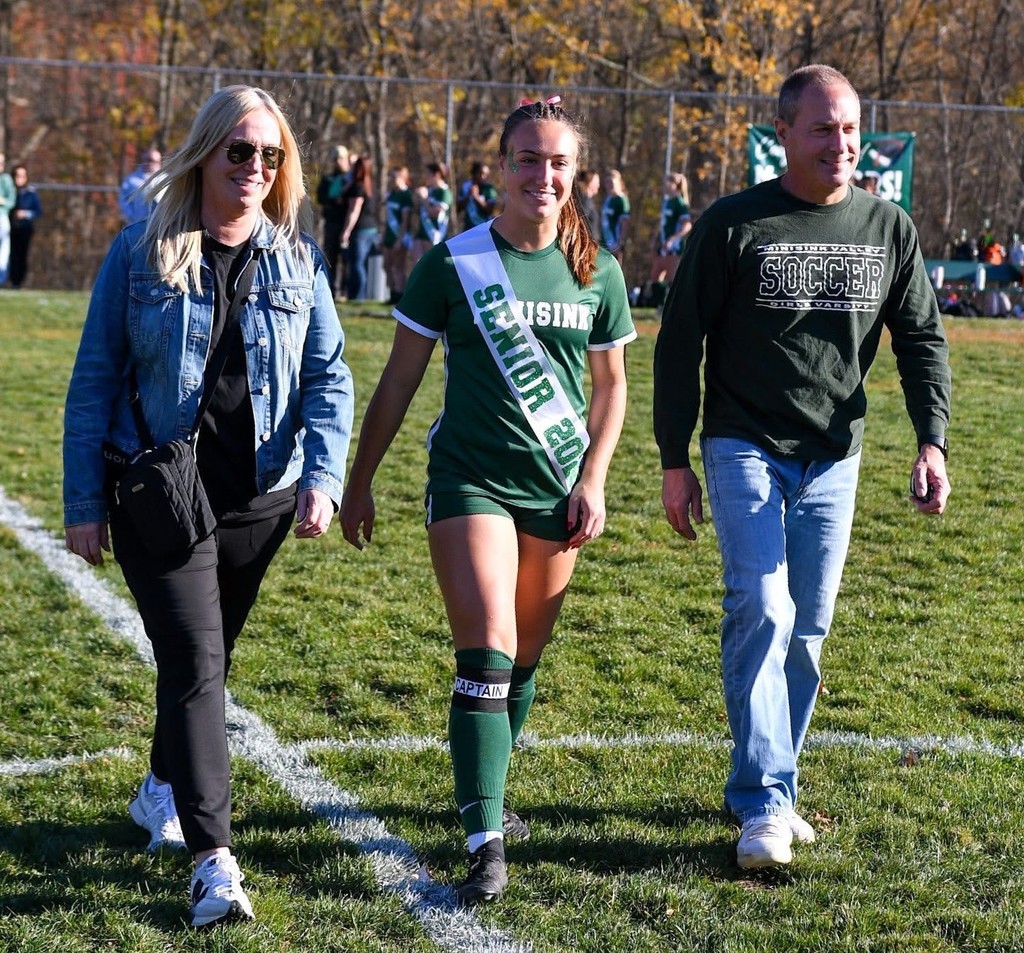
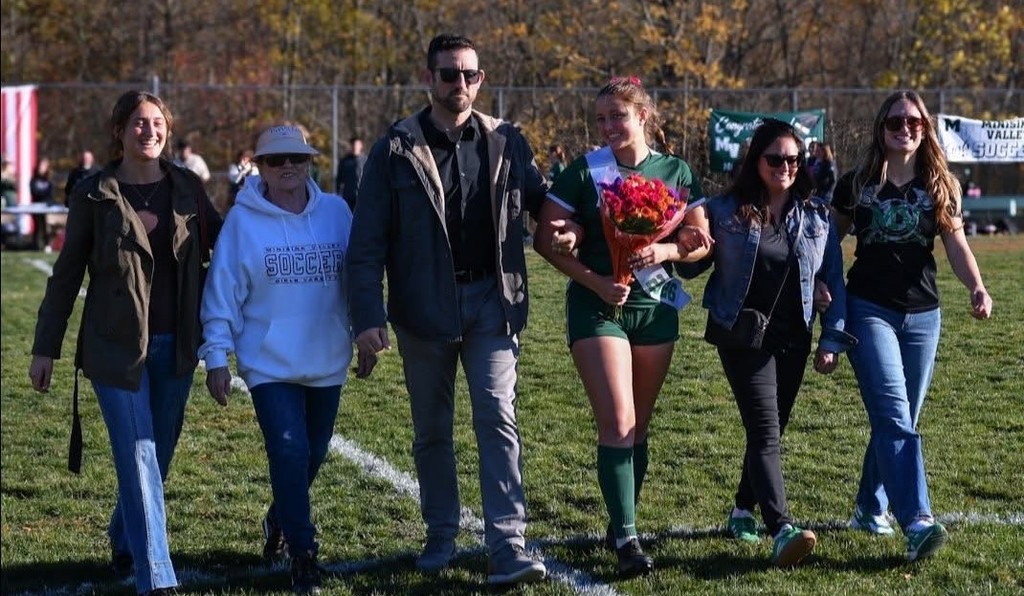

Middle School French class students recently visited their FACS class peers for a culinary cultural experience: Making crêpes! What a creative interdisciplinary learning opportunity! Students made French crêpes from scratch, and along with freshly squeezed orange juice, had a wonderful mid-morning snack! Bravo à tous !
Crêpes originated in Brittany, France, around the 13th century, initially made with buckwheat flour and water. Over time, they evolved, with sweet versions made from wheat flour becoming popular in the 19th century, and crêpes becoming a staple street food in the 20th century. They are traditionally associated with the Christian holiday of Candlemas, or "La Chandeleur," on Feb. 2, and the word "crêpe" comes from the Latin for "curled."
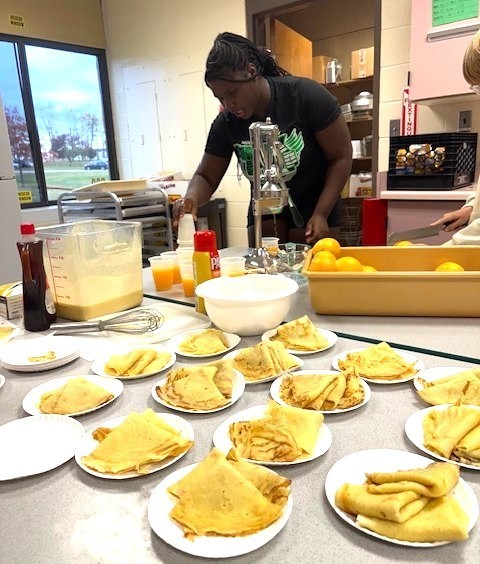
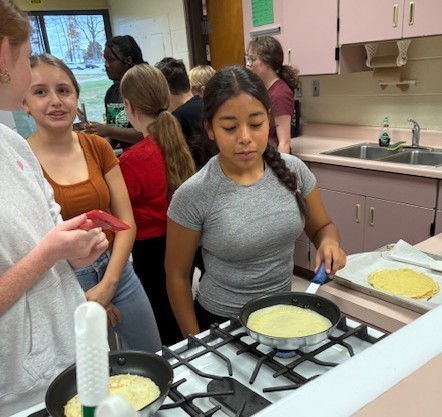
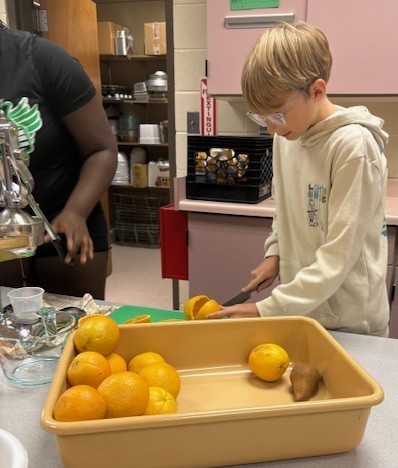
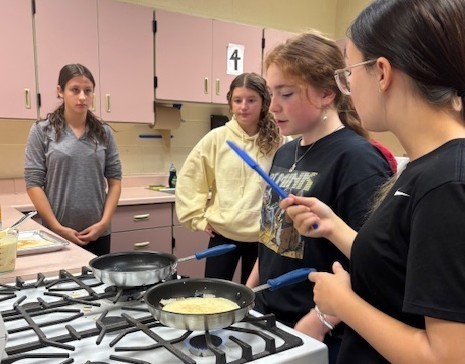
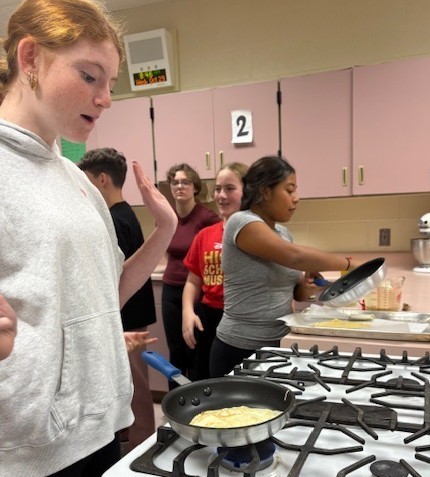
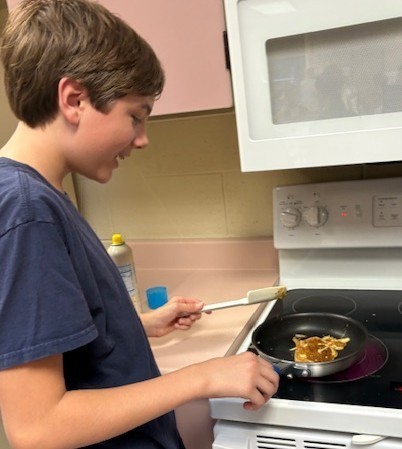
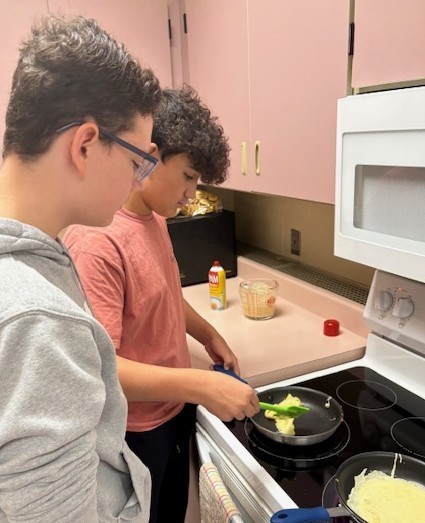
They determined whether each rock was igneous, sedimentary, or metamorphic and discussed how it formed (through heat, pressure, or other processes). It was a fun and different learning experience!
Students learn about igneous, sedimentary, and metamorphic rocks to understand the history of the Earth, how it has changed over time, and how these rocks are used today. This knowledge is fundamental to grasping core geological concepts like the rock cycle, plate tectonics and the formation of landscapes that they’ll also be learning about in their studies.
Igneous, sedimentary, and metamorphic rocks are the three main types of rocks, distinguished by their formation processes. Igneous rocks form from the cooling and solidification of molten rock (magma or lava); sedimentary rocks form from the accumulation and cementation of sediments or mineral precipitation: and metamorphic rocks are formed when existing rocks are changed by intense heat and pressure.
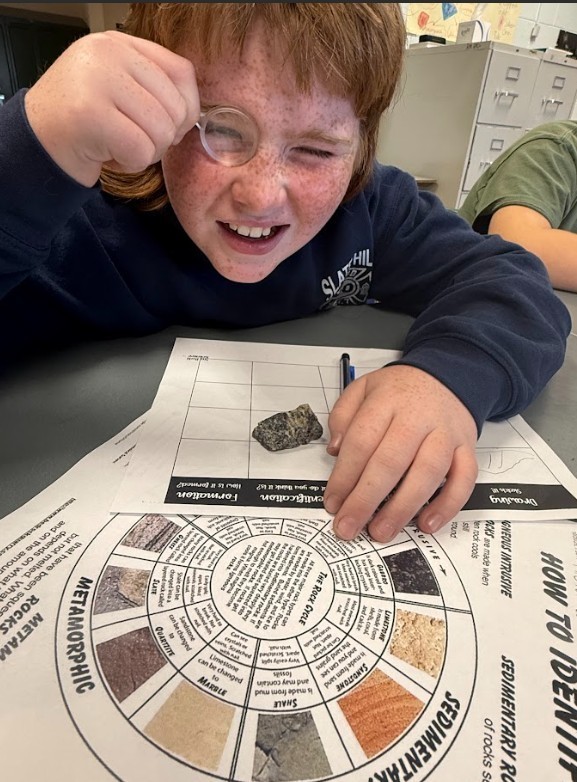
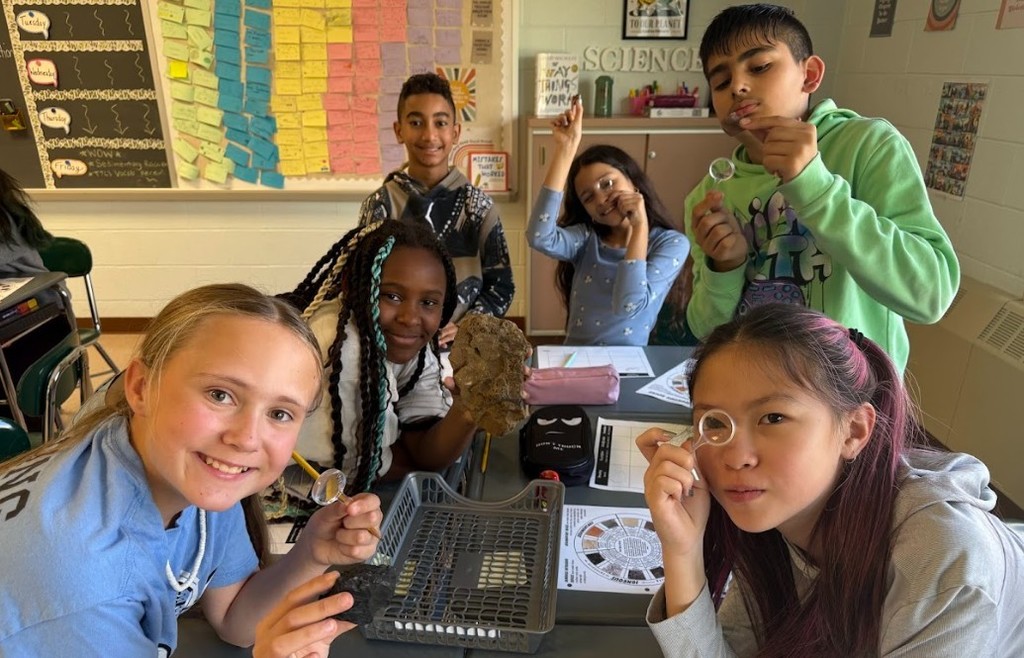
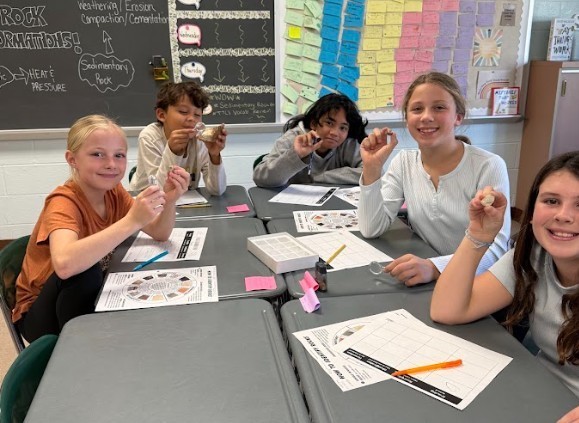
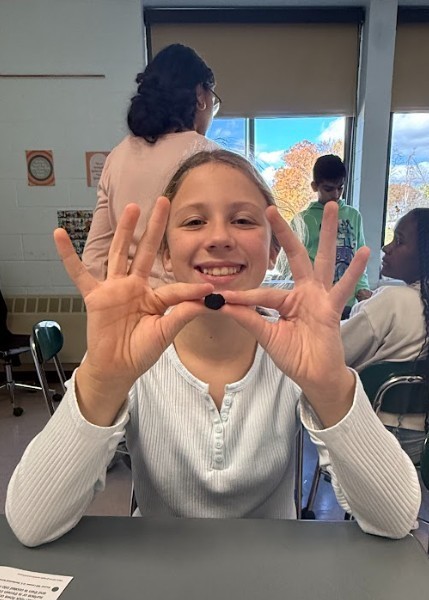
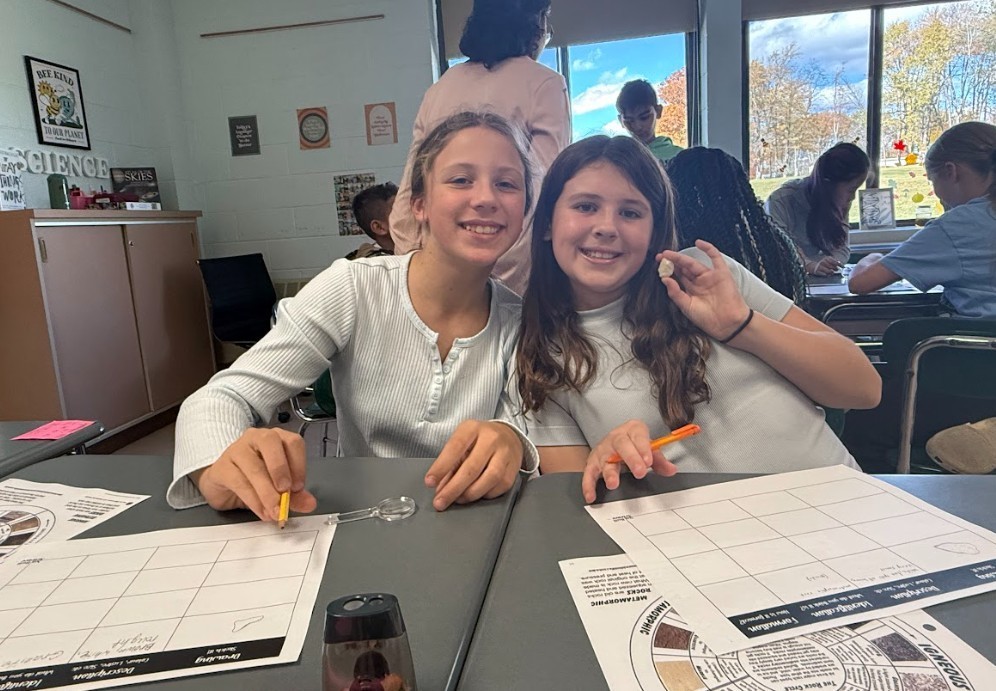
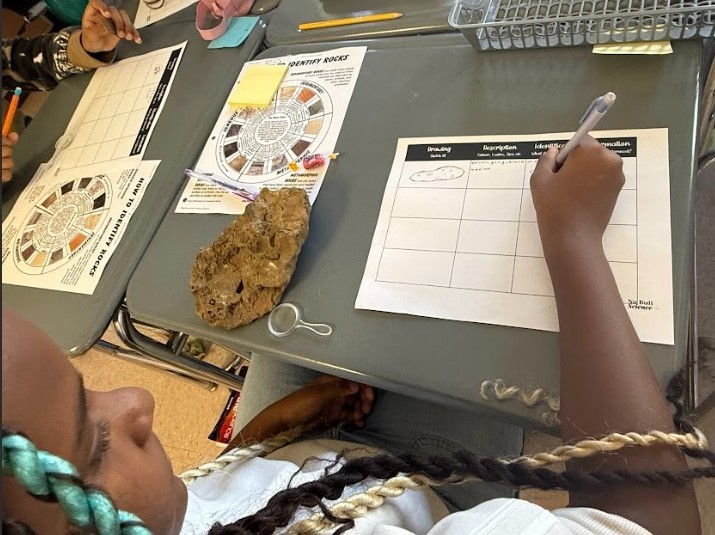
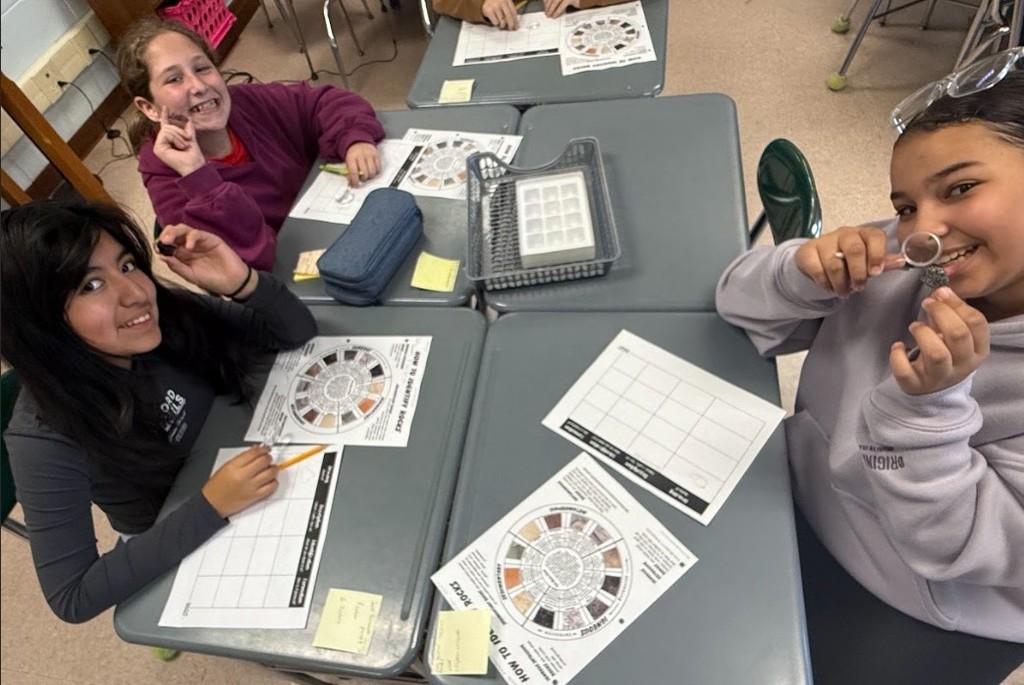
Over 60 members of Seth Johnson’s Future Business Leaders of America (FLBA) Club and his sports marketing classes attended the New York Jets’ recent “Sports Marketing Day” at MetLife Stadium in East Rutherford, N.J.
They were among the 800 students from the tri-state area who attended with an exclusive behind the scenes look at everything it takes to run a sports stadium. Students were given guided tours of the Jets’ locker room, press box, various suites and luxury boxes.
Representatives from the Jets front office informed the students about their jobs and how they got into the sports business. The group learned about marketing, promotion, sponsorships, pricing strategies, game day operations, promotional content creation and client relations as well as some very cool time on the field! WHAT A COOL FIELD TRIP!
Thank you to Market Manager Karis Felton; Client Relations and Retention Senior Manager Richard Guralnik; Flight Academy Manager Brooke Cohen; Group Sales Manager Lauren Krug; Premium Partnerships Director Jonathan Smaldon; Ticket Sales & Service Manager Ted Mangione; Content and Production Coordinator Sarah Conti; Client Retentions & Service Director Jason Soloman; and Premium Partnerships, Service & Retention Manager Stephanie Chaves for their kind hospitality and for sharing their knowledge!
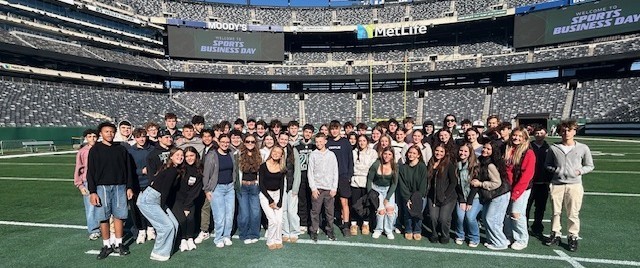
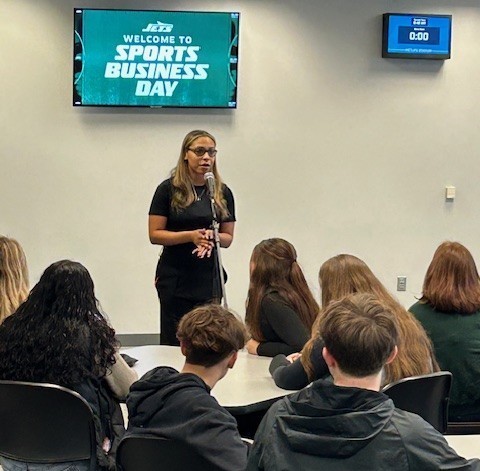
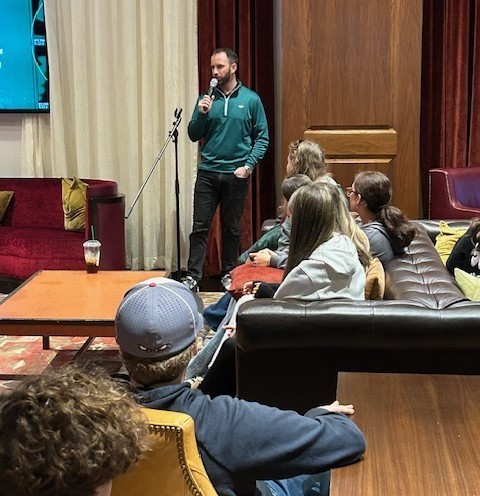
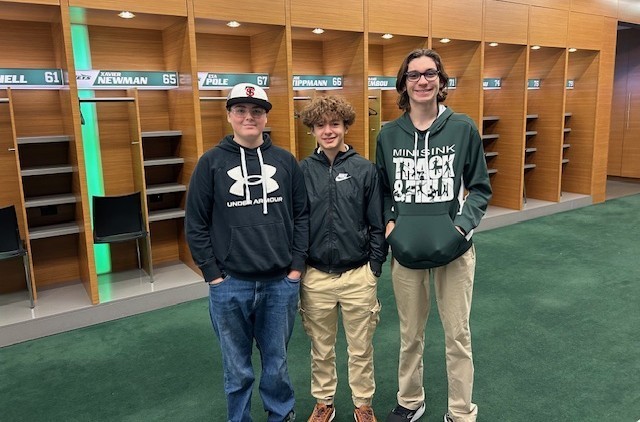
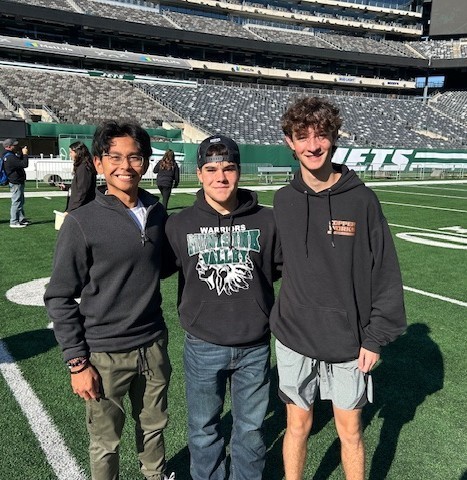
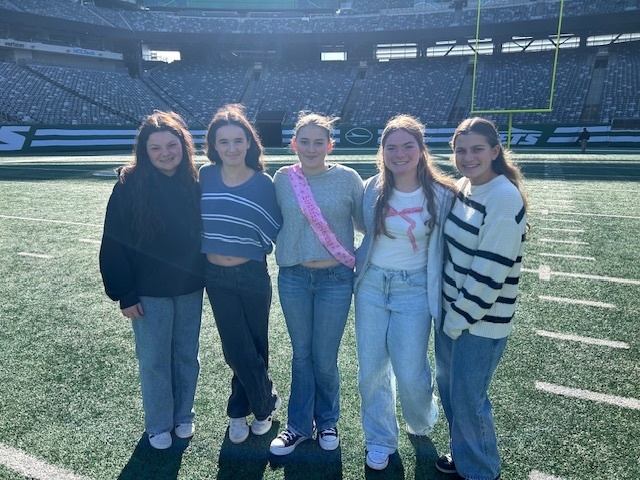
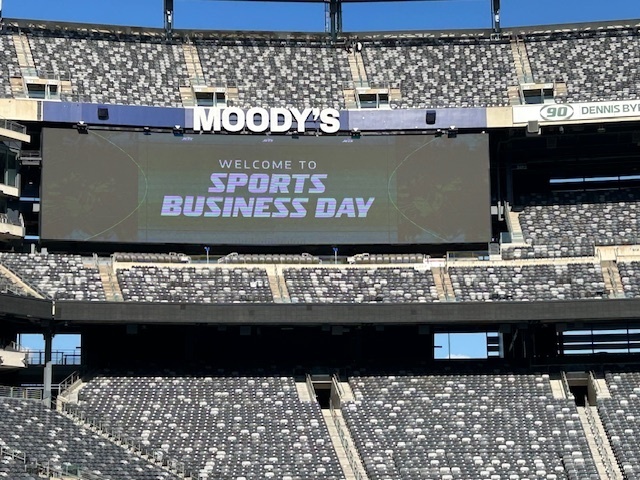
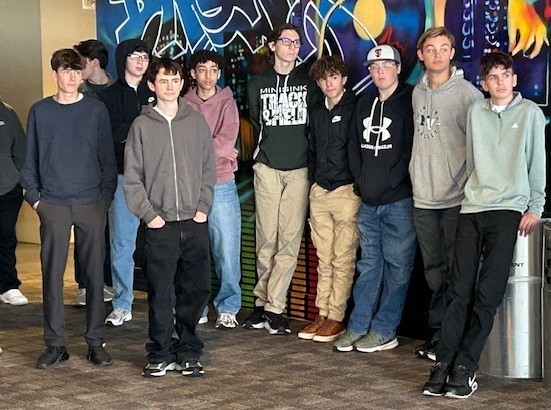
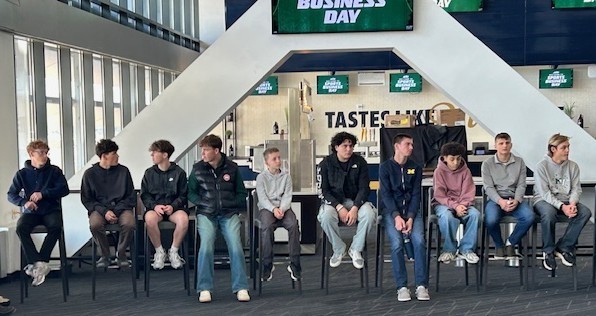
In addition to tying Spanish language instruction to the holiday, las maestras also wanted to engage students with important cultural content. (And, who wouldn’t be up for taking a nibble of grasshoppers?) Thank you to the Middle School PTO for making this celebration possible!
•Día de los Muertos is a multi-day Mexican holiday on Nov. 1 and 2 that celebrates and honors deceased loved ones by welcoming their spirits back for a reunion with the living. Families create altars with offerings like favorite foods and mementos, visit gravesites to clean and decorate them, and share memories and stories to celebrate the lives of those who have passed. The holiday is seen as a joyful celebration of life, not a time for mourning. The holiday is a meaningful way to engage students with cultural content, as it explores themes of life, death, family, and community.
•Pan de Muerto (Bread of the Dead) is a traditional sweet bread baked and eaten as an essential part of this holiday's traditions.
•During Día de los Muertos, chapulines are a traditional and common snack of roasted, seasoned grasshoppers that are a source of protein and considered a delicacy in Mexican cuisine. They are a symbol of the continuity of life and are prepared in regions like Oaxaca, where they are seasoned with lime, garlic, salt, and chiles, and can be served as a side, on tacos or with other dishes.
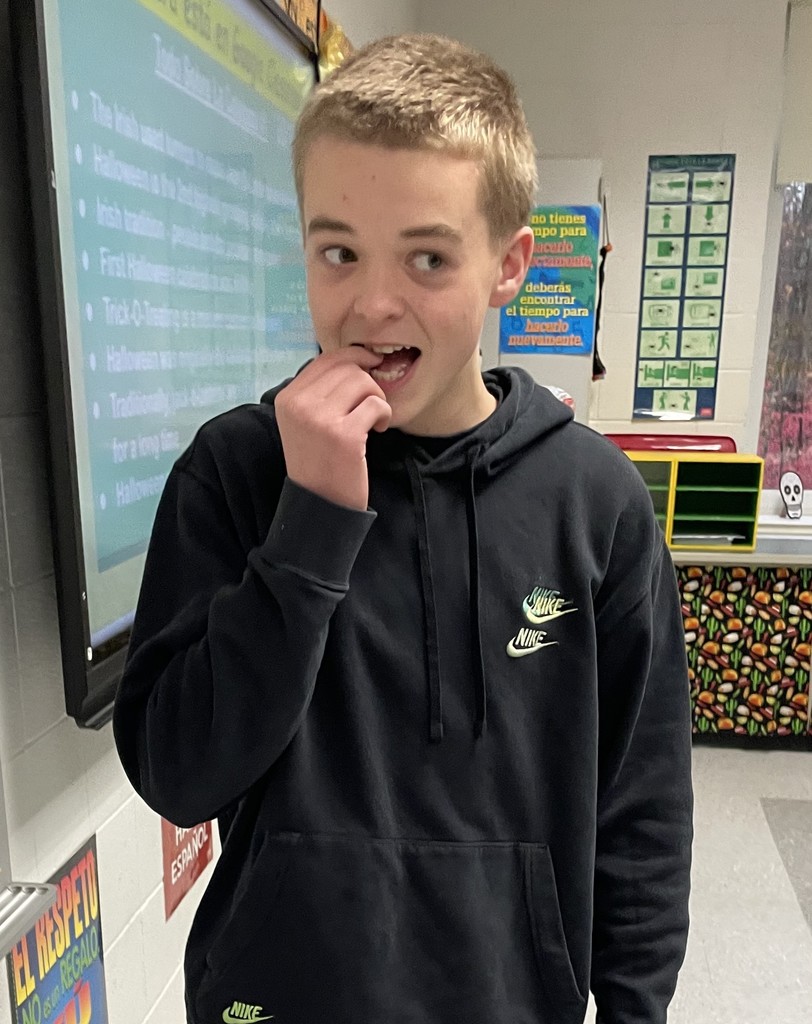
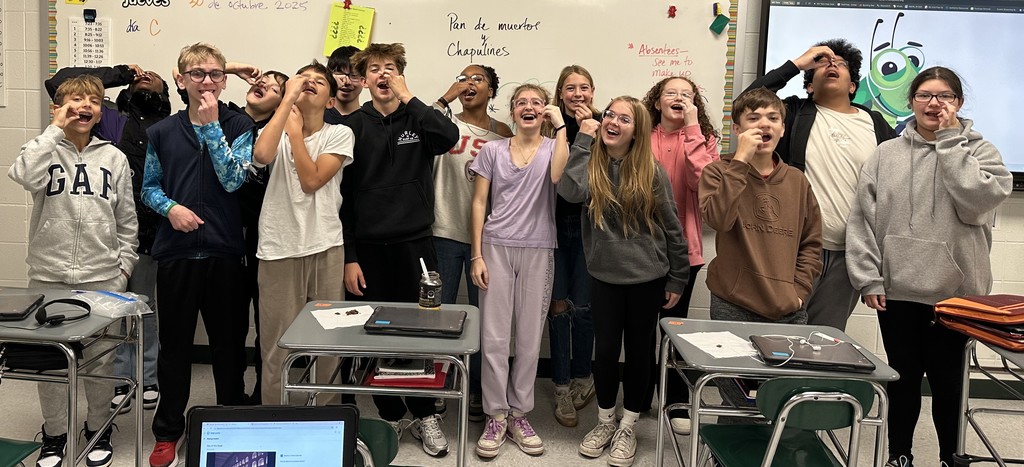
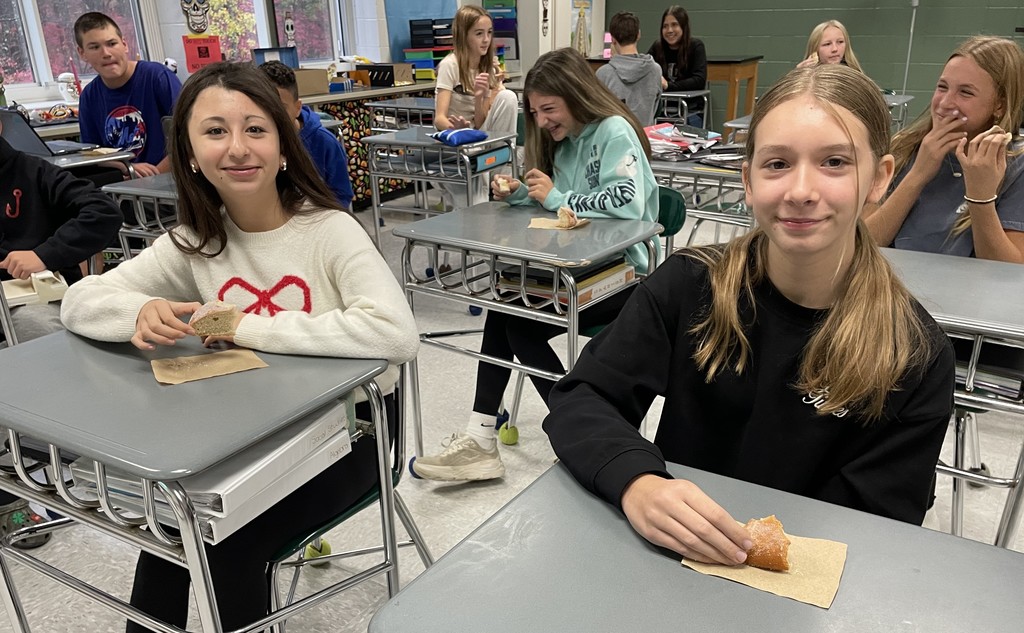
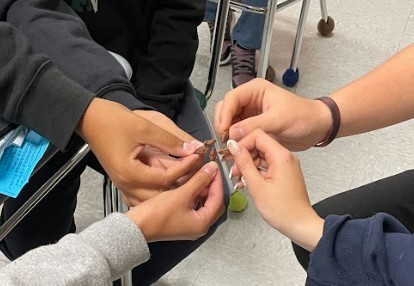
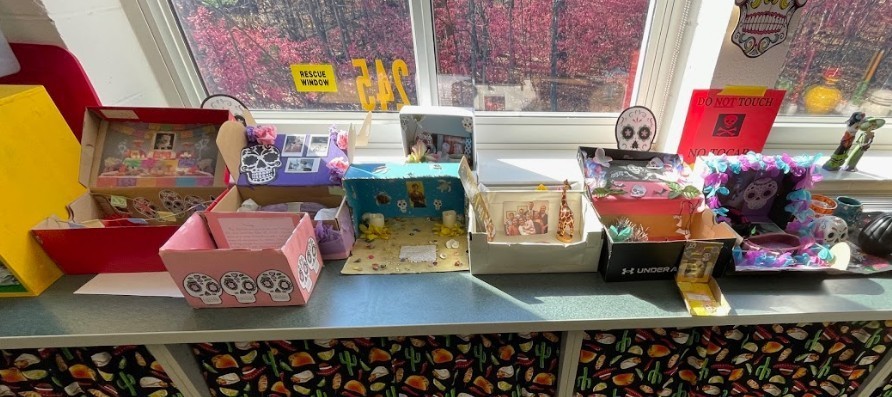
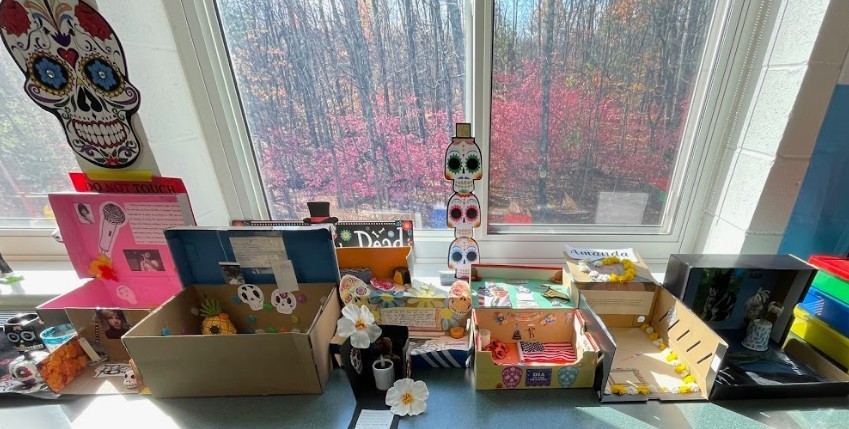
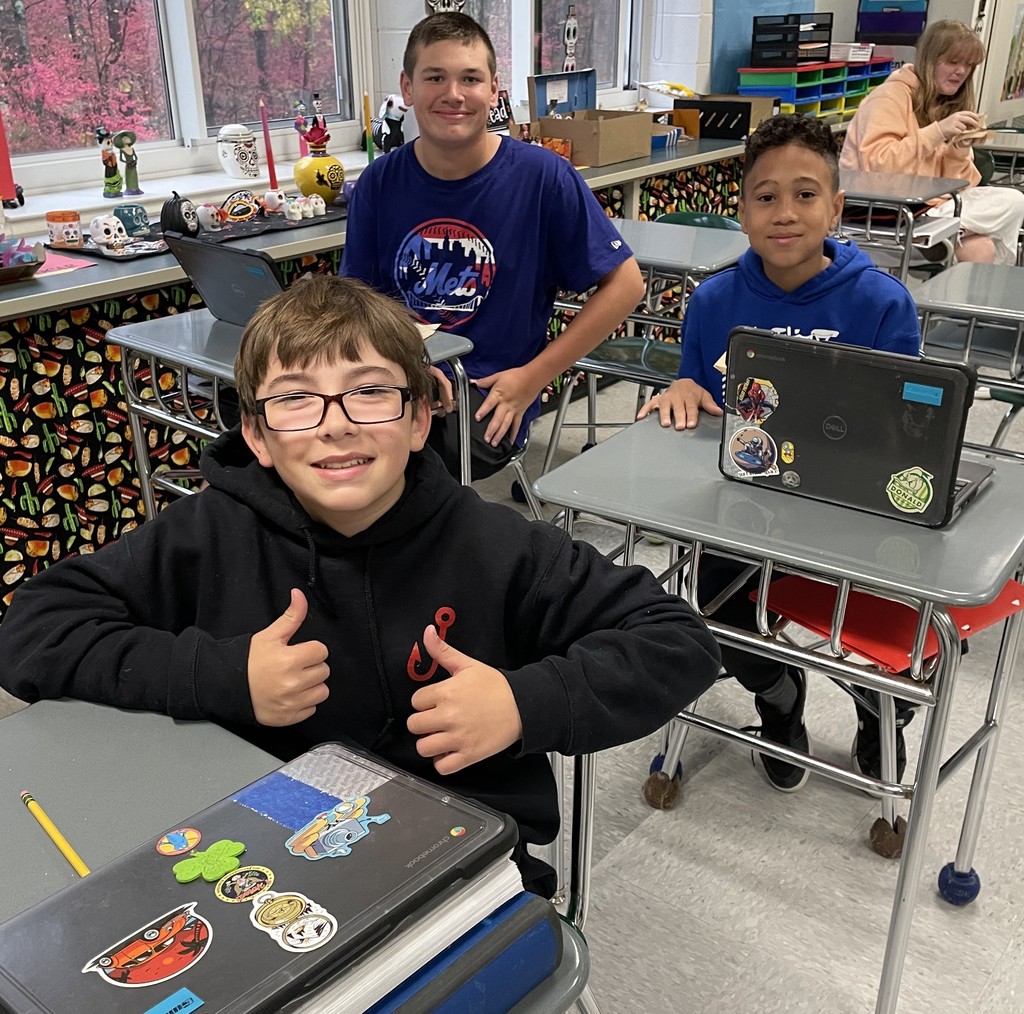
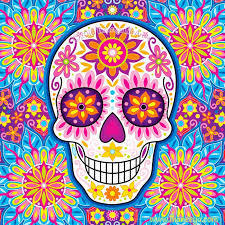
Do you know them? We’ll help: The five traditional senses are sight, hearing, smell, taste, and touch. These senses are used to perceive the world through sensory organs like the eyes, ears, nose, tongue. and skin. Kindergarteners learn about the five senses to develop observational skills, build language, and lay the foundation for scientific thinking. This knowledge helps children understand how their bodies work, how to interact with the world and how to describe their experiences, all while nurturing curiosity and cognitive development!
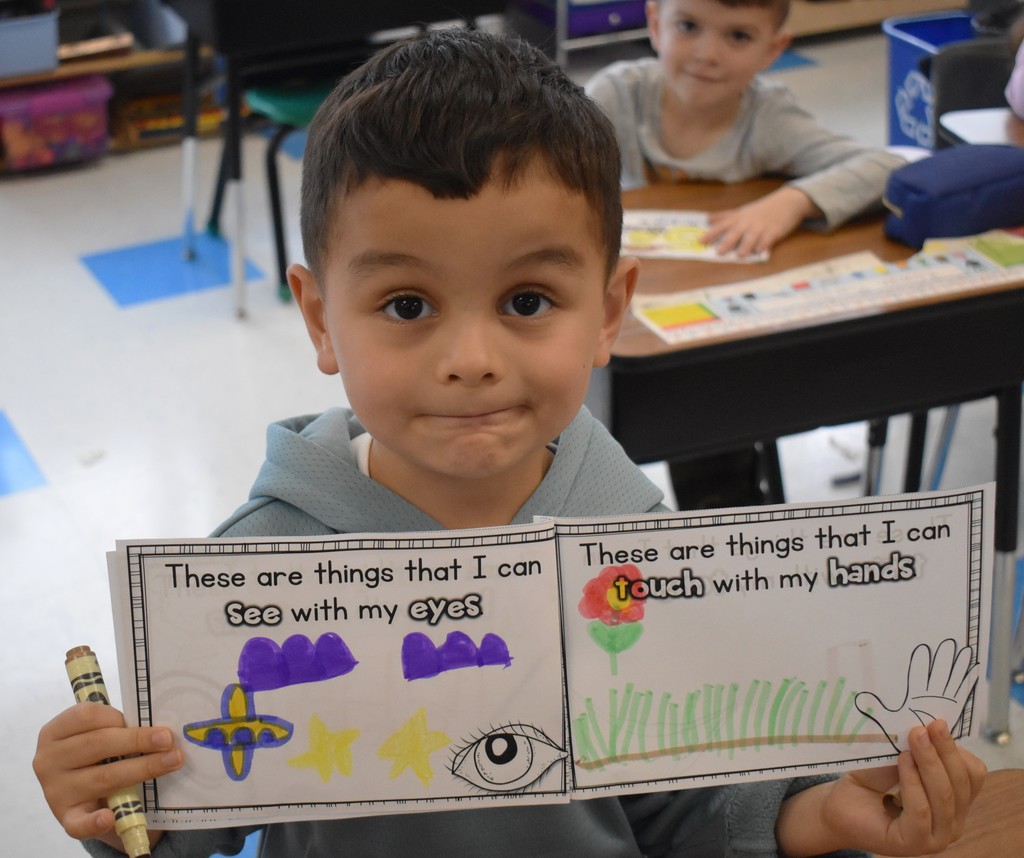
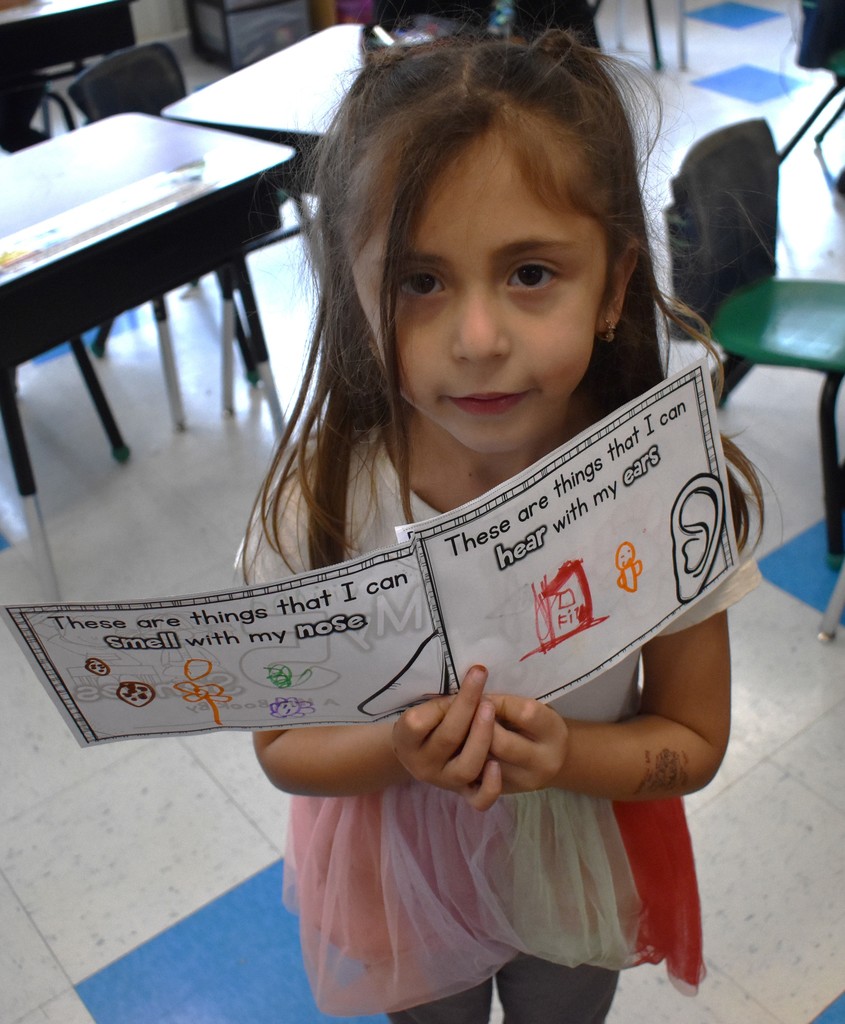
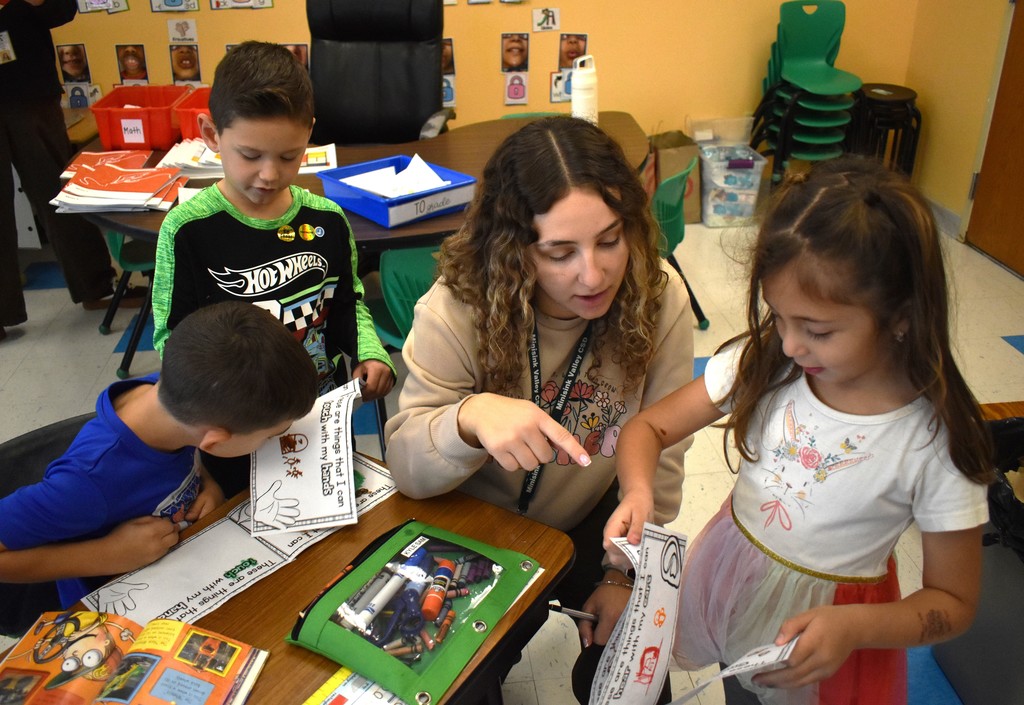
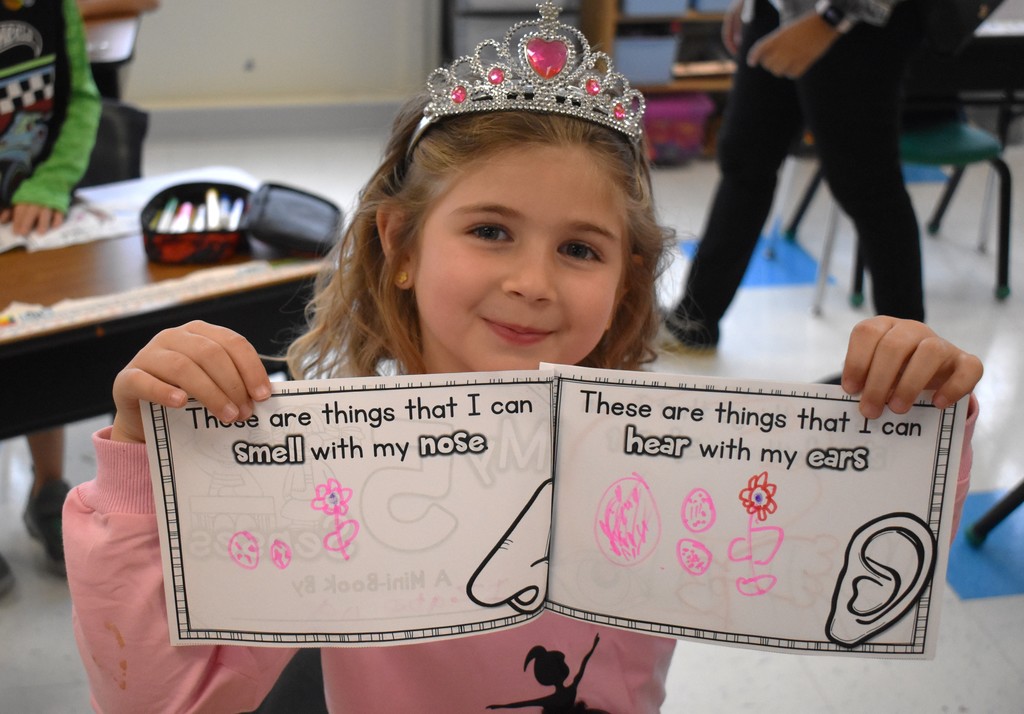
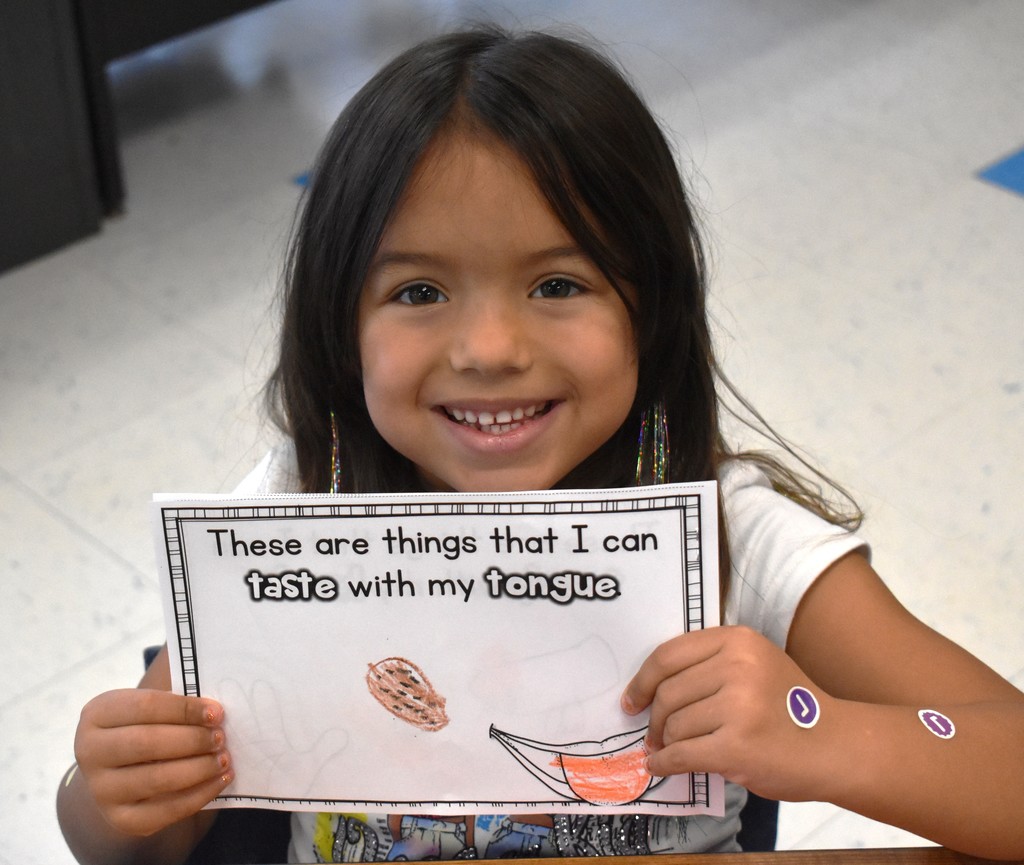
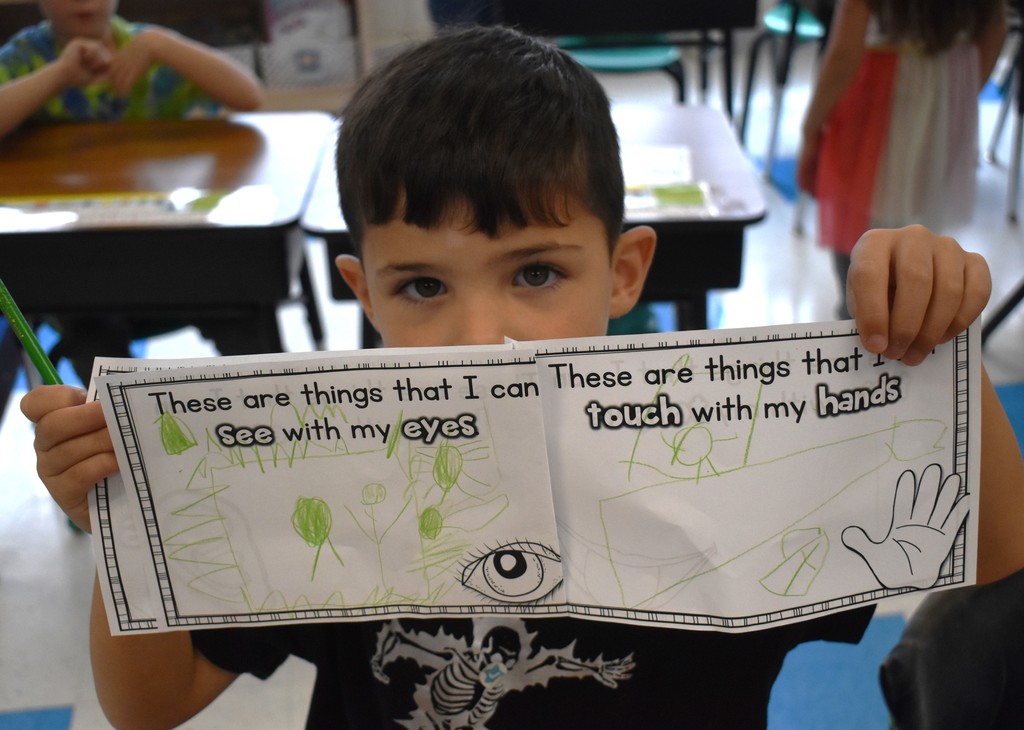
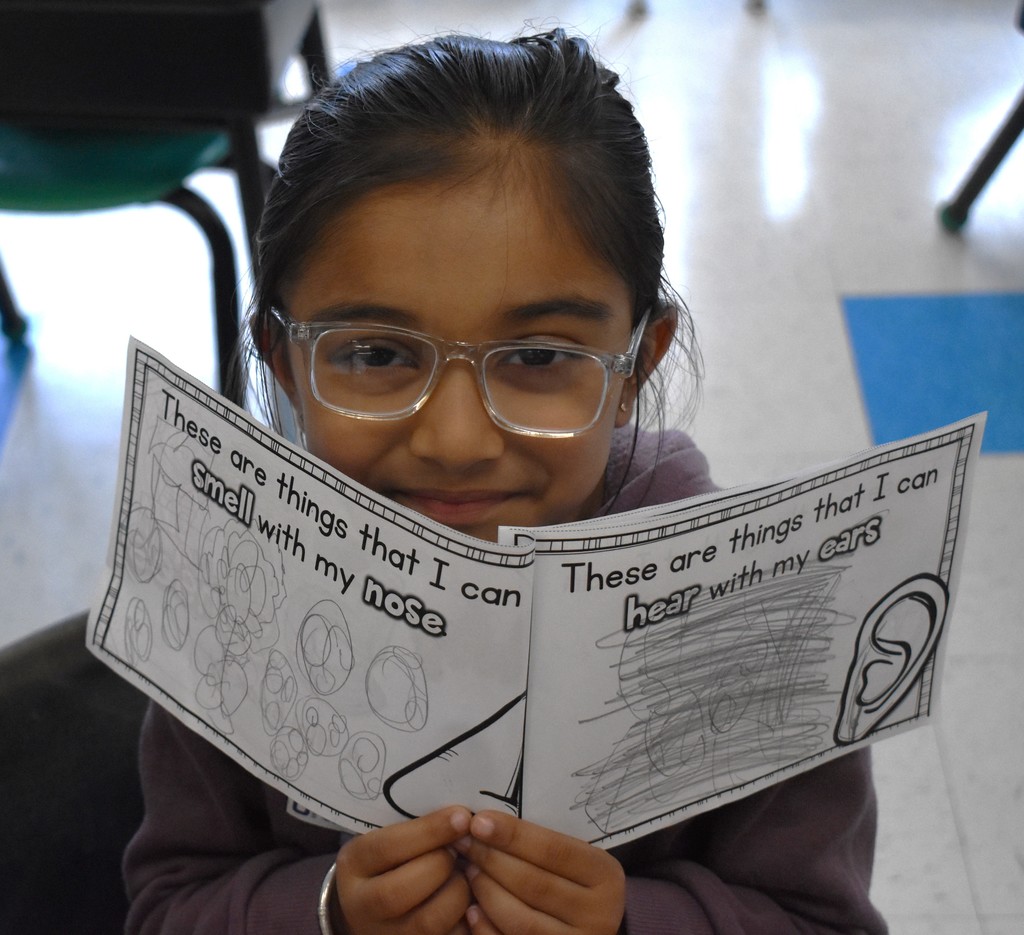
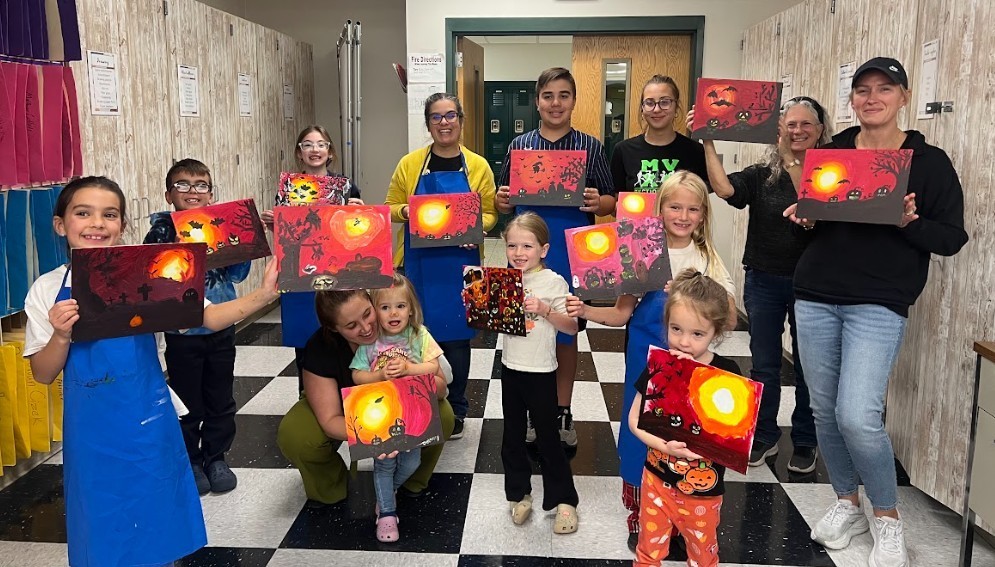
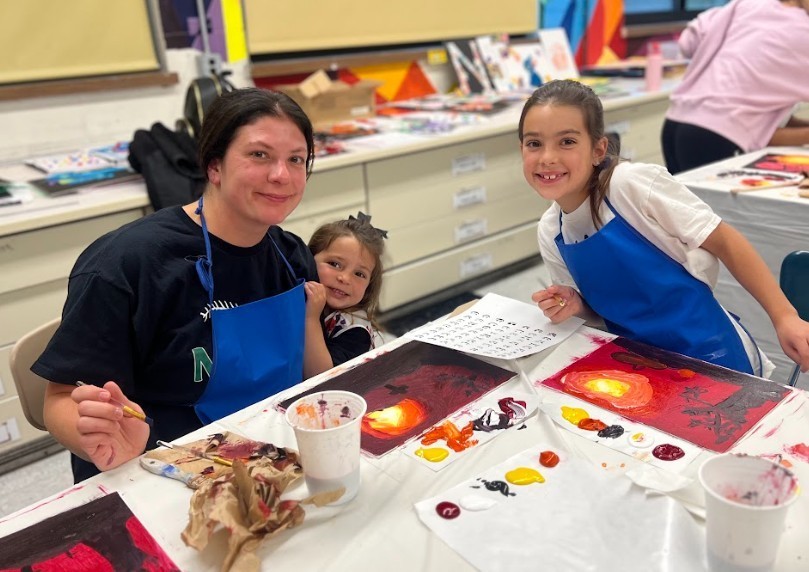
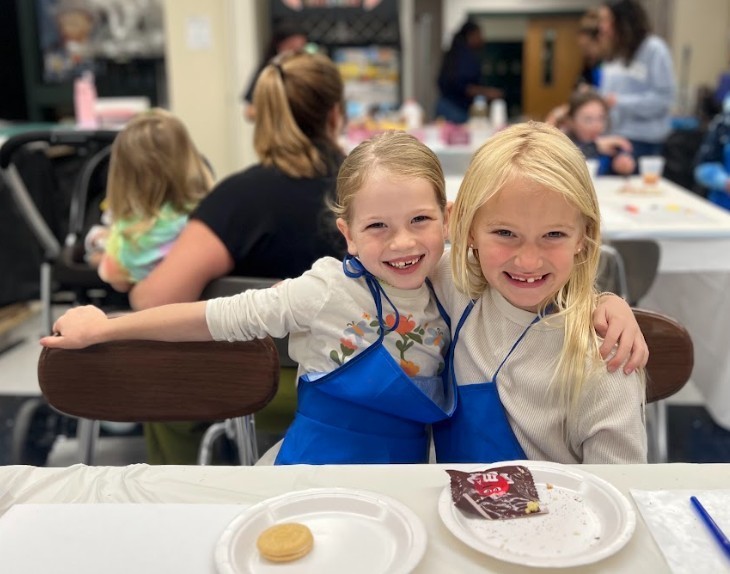
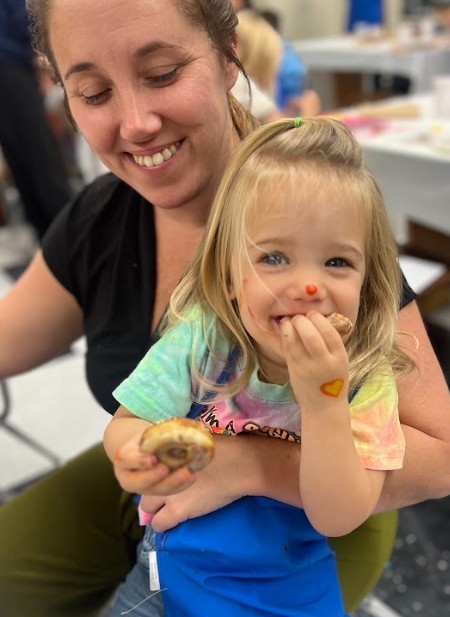
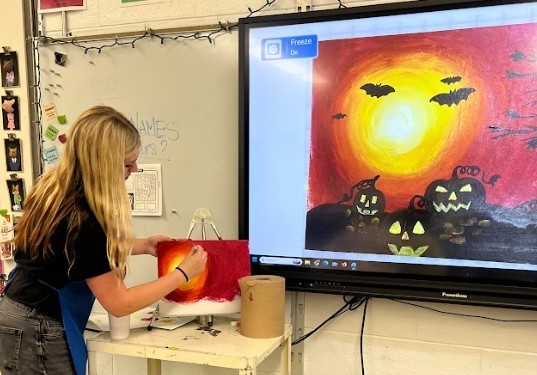
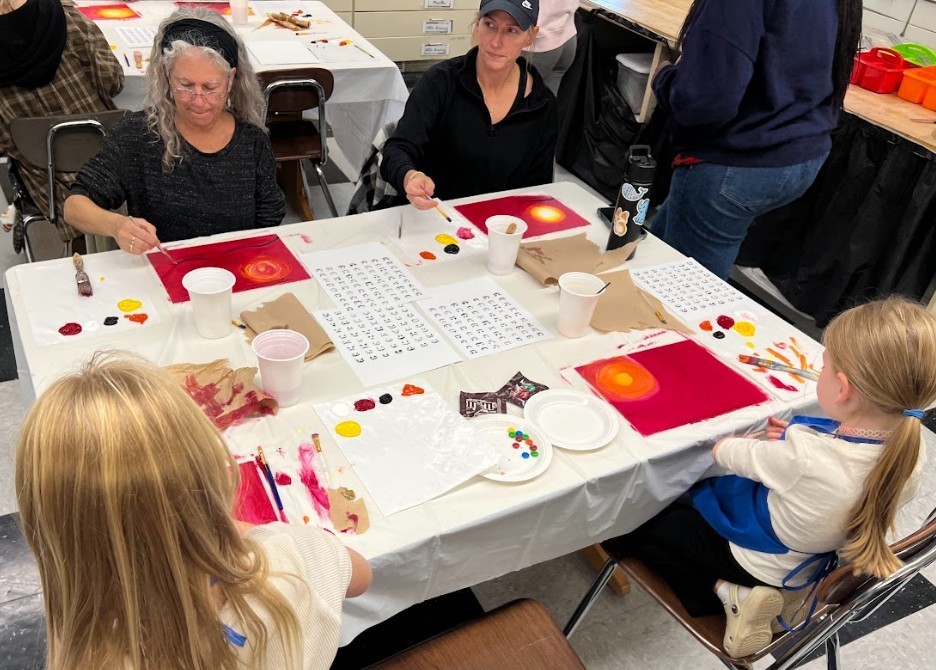
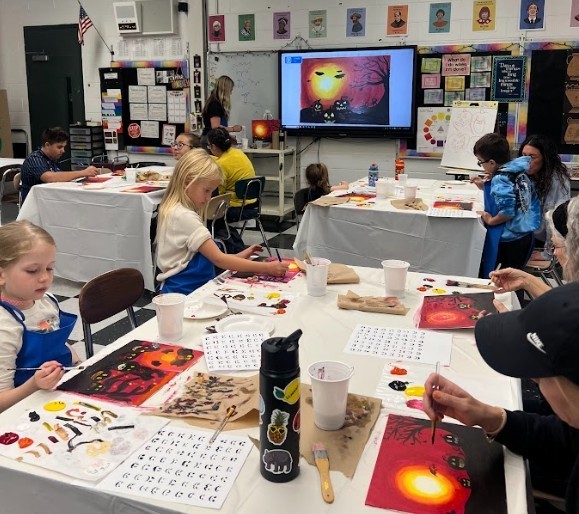
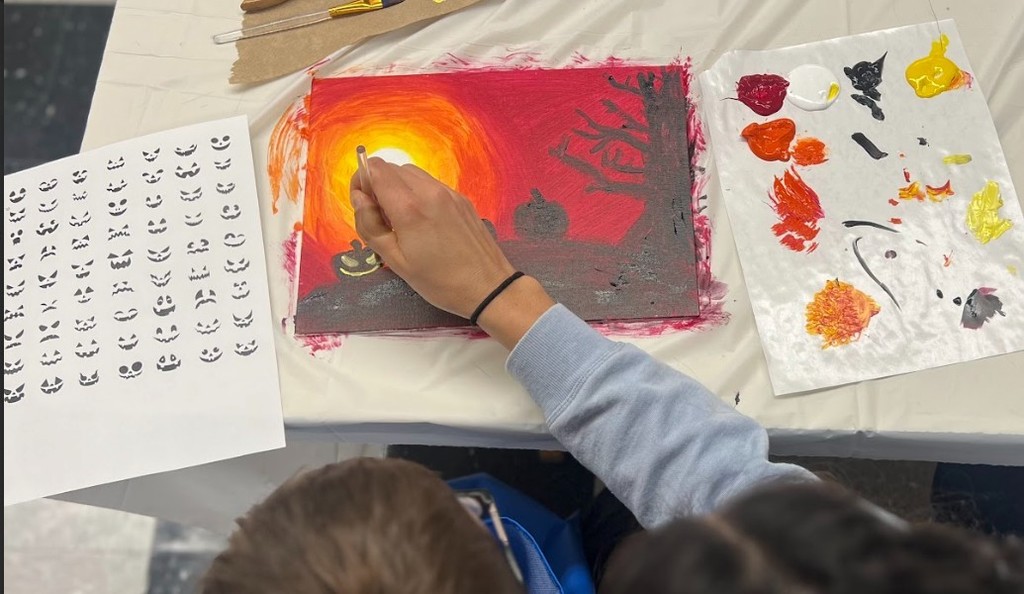
The Middle School Drama Club's production "Between the Lines Jr." will take place Friday, Nov. 21 at 7 p.m. and Saturday, Nov. 22 at 1 p.m.! More details and ticketing information will follow soon!

